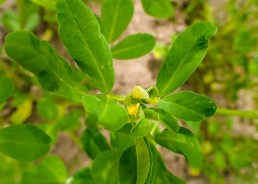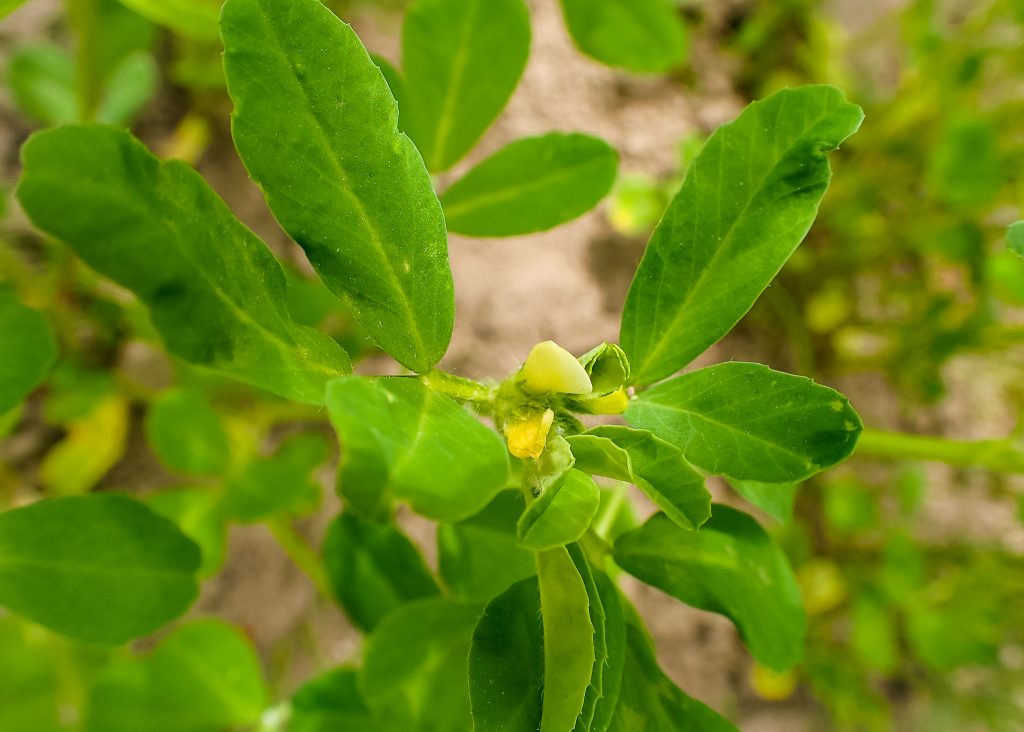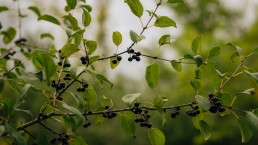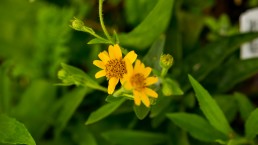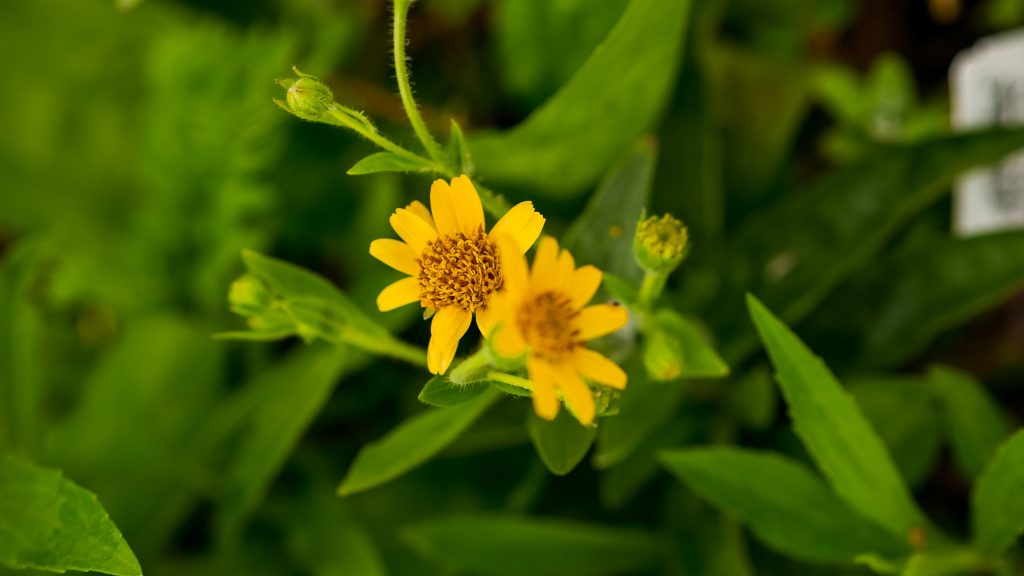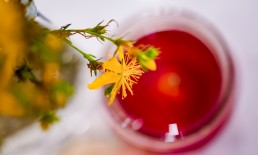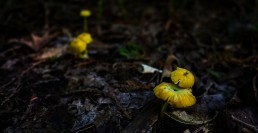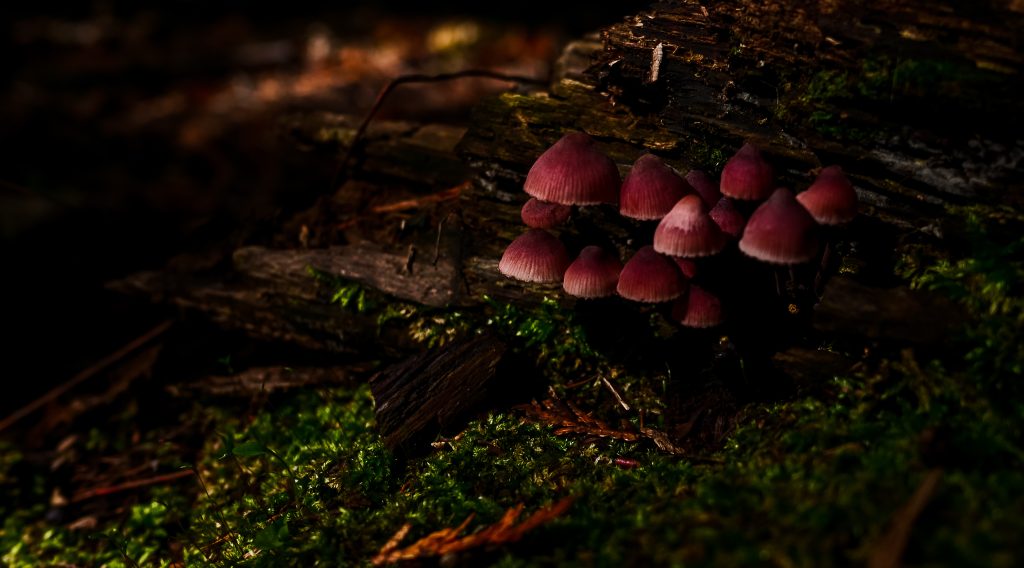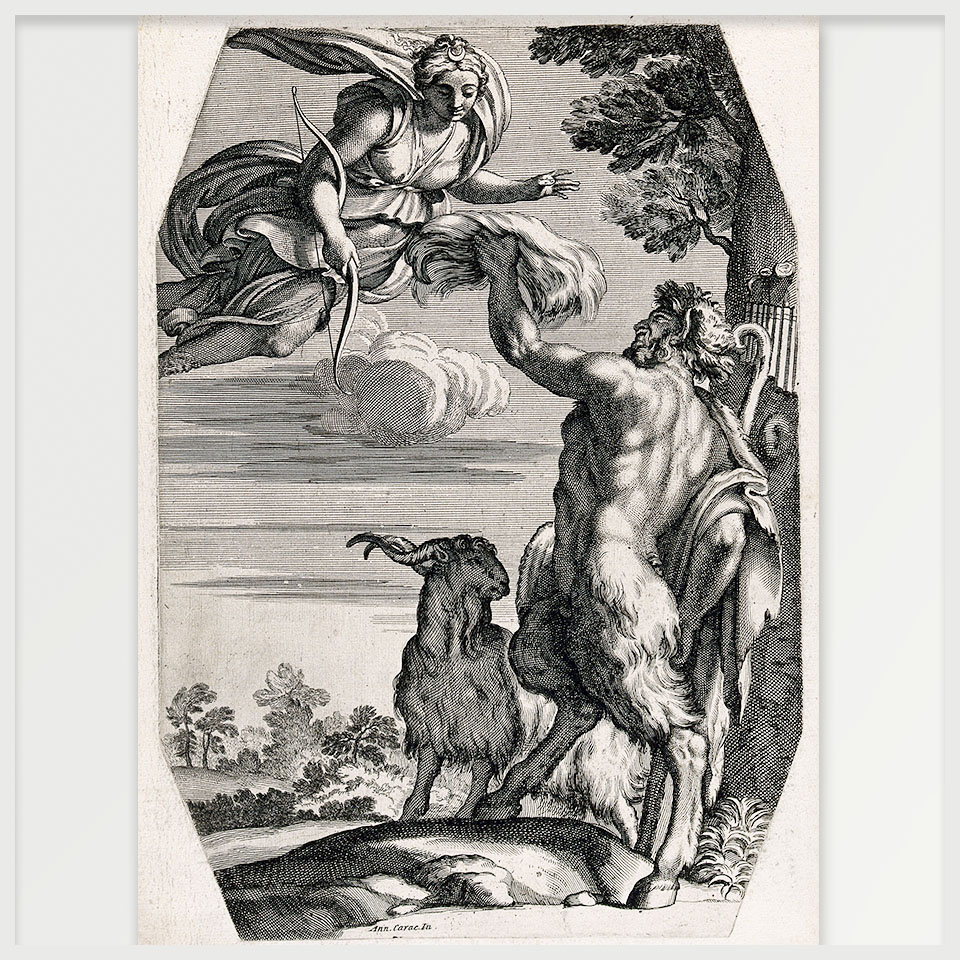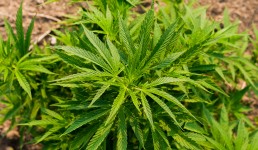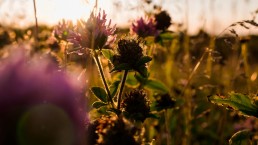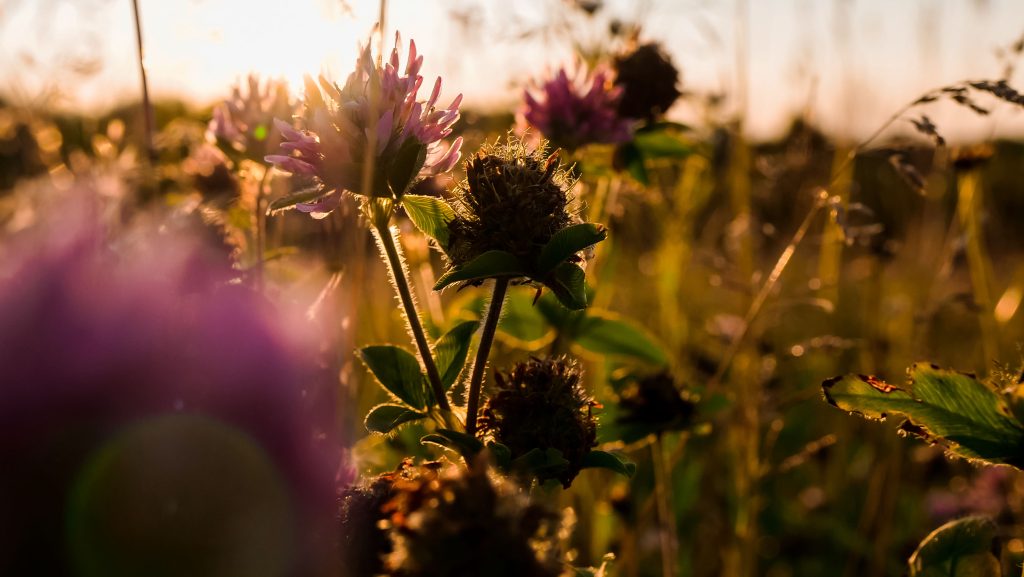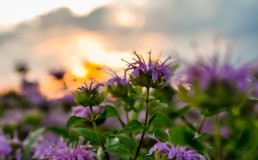Fenugreek: Materia Medica
Trigonella foenum-graecum
Fenugreek is an herb with a long and esteemed history both in medicine and the culinary arts. Some authors suggest that fenugreek originated in India and North Africa, while others suggest that it is indigenous to the eastern Mediterranean region. One of the earliest recorded uses of Fenugreek comes to us by way of Egypt, where it was used in incense making as well as in the process of embalming mummies. Fenugreek, as the name suggests, was widely utilized by the ancient Greeks, for whom it was a staple food. The name foenum-graecum, which literally translates as ‘Greek hay’, refers to the practice of mixing fenugreek with inferior quality hay in order to increase and enhance its scent.
Nutritional and Medicinal Value
As part of its nutritional profile, fenugreek contains considerable amounts of vitamin B and phosphorous compounds (e.g. lecithin), making it a culinary herb with a special affinity for the nervous system (lecithin is a mixture of neutral lipids and phospholipids, which are important constituents of the central nervous system and play a role in promoting and maintaining the health of the brain’s functional pathways). Fenugreek is often added to curries, where it serves to aid and promote healthy digestive function but also helps to prevent gas, bloating, cramping, indigestion, heartburn, and acid reflux in susceptible individuals. Fenugreek contains considerable amounts of iron, and may be well employed in some cases of iron-deficiency anemia: fenugreek helps the body in the process of blood formation. Continuing with the nutritional properties of the herb, Dorothy Hall remarks: “As it also manufactures in its growth vitamin A and a vegetable-form of vitamin D, it is supportive of liver function too, and protective of all mucous-lined body organs. There is much sulphur present; and also choline, and support for cholesterol metabolism” (Hall: 1988, 159). Fenugreek is an herb to consider when dealing with a hypo-functioning liver. In Ayurvedic medicine, fenugreek is recognized as “a good herbal food for convalescence and debility, particularly that of the nervous, respiratory and reproductive systems” (Frawley & Lad: 2001, 190)
Concerning the use of fenugreek as a medicinal herb, Hall provides us with the following overview:
“Its properties may best be summed up as supportive of liver function, protective to mucous- linings all through the body, and giving renewed nervous energy. There is a fourth benefit, however, and one which is becoming more and more necessary today: Fenugreek clears and promotes the drainage of the body by the lymphatic system. As lymphatic vessels and lymph- fluid movement are essential parts of our immune system, Fenugreek may become a valuable plant for the future.” (Hall: 1988, 159)
Fenugreek is likely the most frequently employed herbal galactagogue, meaning that it helps to promote the production of breast milk. It is also widely used in the treatment of diabetes type 1 and 2, where it helps to increase the body’s tolerance for carbohydrates, reduces blood sugar and total LDL cholesterol levels. Fenugreek can be used by men who experience seminal debility (i.e. issues with the quality and quantity of sperm), as well as for erectile dysfunction and low libido (fenugreek contains furostanolic saponins, which have been linked to increased testosterone production). Fenugreek is a lung tonic and has its place in the treatment of asthmatic complaints, as well as lung and sinus congestion. A paste made from fenugreek seeds can be used topically for ailments such as boils, ulcers, burns, and poorly healing sores (Frawley & Lad: 2001, 191). Other traditional indications include: tuberculosis, gout, and generalized body pain.
On the level of herbal energetics, fenugreek is: bitter, pungent, sweet/heating/pungent. It affects the plasma, blood, marrow, nerve and reproductive tissues and has an affinity for the digestive, respiratory, urinary, and reproductive systems (Frawley & Lad: 2001, 191). Fenugreek is a stimulant, especially for a slow-draining lymphatic system and where there are issues with edema and fluid retention. Fenugreek possesses diaphoretic and mild diuretic actions. It also possesses tonic, expectorant, rejuvenative, and aphrodisiac properties.
Works Cited:
Hall, Dorothy. Dorothy Hall’s Herbal Medicine. Melbourne: Lothian Publishing Company, 1988.
Frawley, David & Lad, Vasant. The Yoga of Herbs. Wisconsin: Lotus Press, 2001.
—-
Image Credits:
Krzysztof Ziarnek, Kenraiz: Mildly colour edited version of their original Fenugreek image.
Old Fence Rows and Buckthorn
Spring is Ever Drawing Nearer
My fingers are itching to be in the earth once more – to sow and plant — bringing me into a deeper connection with the Earth once more. Our seeds have all been delivered and our trees ordered, and we are already busy here on the farm. The sugar shack is getting a new wind break and the chainsaw is sharpened and ready to go. With the snows melted and frost still in the ground it is the perfect time of year to work away at controlling the invasive Buckthorn.
As many of you know, besides being a clinical herbalist, educator and tea blender extraordinaire (a tea nut to some), we are a botanical sanctuary member of United Plant Savers. Gifting back to the Earth, thankful for all she has gifted us, especially plant medicine. So, we have been busy planting and rewilding for over thirty years now. Our goal is to plant as many endangered and native medicinal plants and trees as we can each spring and fall.
Over the years, we have had a few comments about the non-native species growing and thriving on the farm, people encouraging me to consider digging them all out, eradicate the invasive species from the land.
(Invasive species: “An organism that is not indigenous, or native, to a particular area.”)
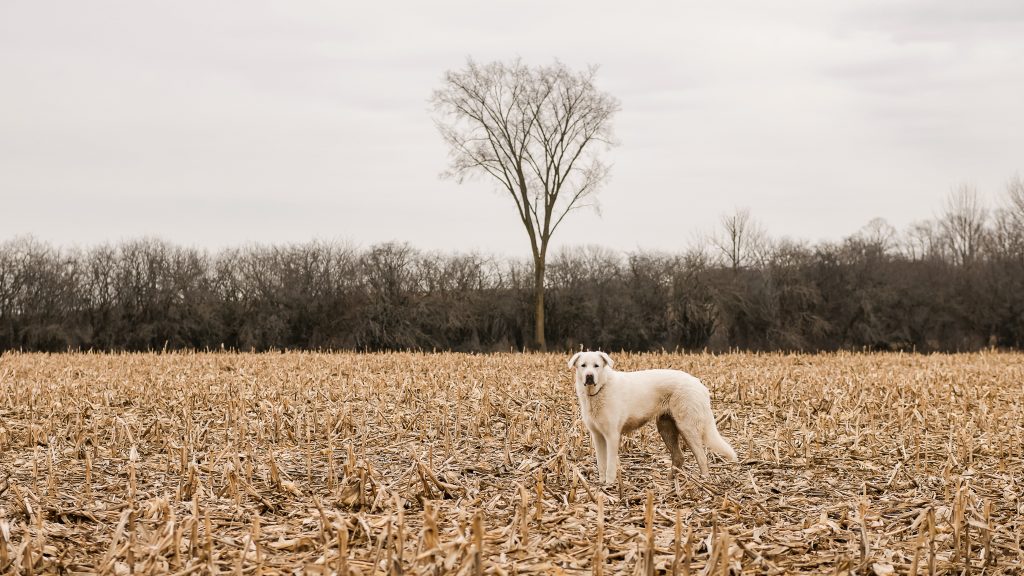
This is easy to say for a person who is not doing the ‘work’ or not possessing a strong love for all who grow and live on these one hundred acres of land. Do we cut down non-native trees, who’s limbs hold nests of baby birds? Do I pluck every Plantain plant from the land? Do we dig up the lilacs brought with the pioneers, that still grace this farmstead — reminders of days gone by? What about her fragrant blossoms that the pollinators seek out each spring? Think about the connection they have already formed to this land.
What about the invasive species that take over an area and swallow up what was there before? These I am trying my best to keep in check and harvest freely for medicine — Phragmites and Garlic Mustard, recently appearing. But Buckthorn is a different story – she has literally kept me awake at night – how do I handle this undesirable invasive small tree?
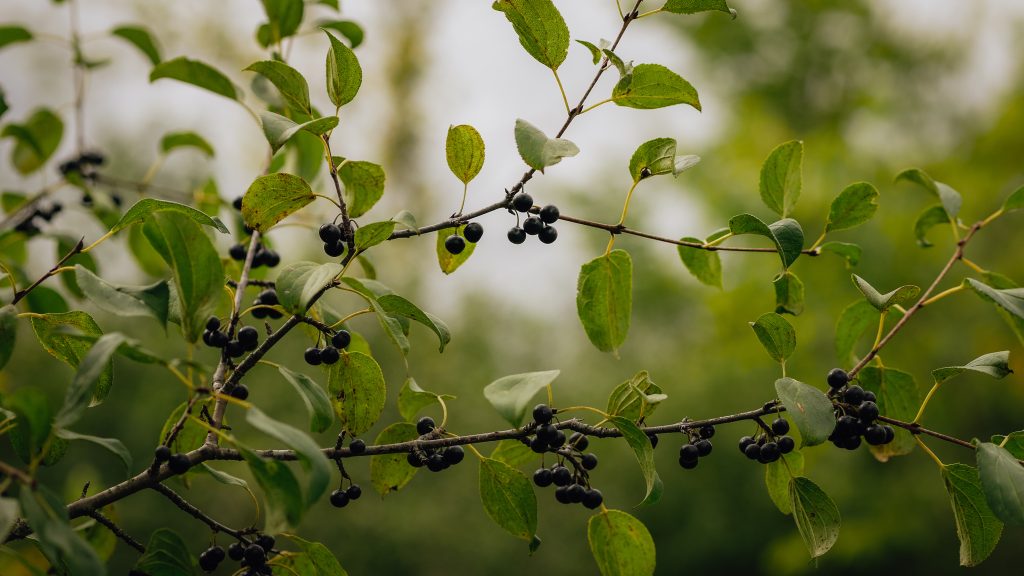
Description of Buckthorn:
Buckthorn’s main stem is erect, with bark smooth, of a blackish-brown colour, on the twigs ash-coloured. The smaller branches generally terminate in a stout thorn, giving it the name Buckthorn. There are many older names by which this shrub has been known: Waythorn and Highwaythorn. The leaves grow in small bunches, mostly opposite. They are egg-shaped and toothed on the edges, small greenish-yellow flowers are produced, which are followed by globular berries about the size of a pea, black and shining when ripe, and each containing four hard, dark-brown seeds.
Medicinal Action and Uses of Buckthorn
Laxative and cathartic.
The berries are used medicinally, collected when ripe and made into a syrup of Buckthorn, which was used as an aperient drink.
Until late in the nineteenth century, syrup of Buckthorn was a most favourite remedy, used as a children’s laxative, but its action was so severe that, as time went on, the medicine was discarded. It is now used almost exclusively in veterinary practice only, being commonly prescribed for dogs, with equal parts of castor oil as an occasional purgative.
Nature’s Wildlife Highway
Buckthorn was brought here with the European settlers as an ornamental bush and to line fencerows. Keeping livestock in and to serve as much needed windbreaks for the newly cleared land. Some people may only see Buckthorn when they look at these old hedgerows, but there, amongst their midst, if you look much deeper you will see the Birch, Wild Apple trees, Maples, Mountain Ash, Basswood, Aspen, Puff balls, Morels and blankets of our beloved woodland flower, the Trout Lily – which takes over seven years to receive her first bloom!
The hedgerows on our farm are over one hundred and twenty-five years old, deep within the bushes and trees are the remains of old rotting cedar zig zag rail fences, that once marked the property boundaries. These rails now offering homes for small critters and insects, slowly decomposing and feeding the soil, and nurturing the surrounding plant life. These fencerows provide wildlife with shelter and food, and well used trails for safe travel. Connecting the travelers to other fence rows and more trails. We can’t forget the help these hedgerows gift our pollinators as well, with over thirty Wild Apple Trees — all a blossom in the spring and a buzz with life. Providing rich pollen and nectar that our bees use for nutritious food and to make their honey. Many of these old fencerows are being cleared on neighbouring farms. Cleared for more workable land and giving the huge farm equipment of today more room to maneuver with ease. Saving the farmer’s valuable time, but at what cost to our wildlife?
Do I dare disturb this delicate ecosystem? Do I disturb the hidden trails within – taking the safety from the Deer, Coyote, Fox, Wild Turkey, Lynx, Fisher, Bear, and many other creatures who frequent these paths. Buckthorn has been a crucial part of the hedgerow, nurturing the young trees and plants. With connections like these the decision is easy, my intuition has always known, the Buckthorn filled fencerows will NOT be disturbed in any way.
This is my heartfelt commitment to this land.
“Look deep into nature, and then you will understand everything better.”
~ Hans Christian Andersen
Photos Provided by Serena Mor
Arnica: Materia Medica
Arnica and its Application
Arnica is an herb with a “strange history”, as herbalist Rudolf Weiss comments,
“It used to be very popular, being used internally as well as externally. It is said that the German writer, poet and scientist Goethe would ask for Arnica tea when in his old age he experienced anginal pain due to coronary arteriosclerosis” (Weiss: 1994, 169).
In fact, Goethe claimed that Arnica had saved his life. He sang the praises of Arnica, holding it up as an archetypal healing herb with associations to Helios (the all-knowing God of the sun, of prophecy, and of healing) and Asclepias (son of Helios, the caduceus wielding God of medicine, healing, and rejuvenation who oversees physicians and the practice of the healing arts amongst human beings). Goethe writes:
“Thus I assign Arnica to Helios among the gods. And among men? To the follower of Asclepias who wanders among the lonely heights. Here we have a plant of rapid healing, of firm decision. If you suffer violence and injury, from fist, cudgel or blade, wondrous healing is nigh in this herb. The vital energies are flowing, the pulse grows stronger, the heart takes courage; if the blood has lost its way in a bruise or an effusion, arnica will remind it of its proper courses. Muscles and sinews grow firm; the body form, having suffered insult and injury, is restored, and so is the nervous system where it is so difficult to achieve healing. The organic revolt at injury sustained — we call it pain — lessens and passes.”1
Topical Verses Internal Use
Despite Goethe’s praises, most contemporary authors and practitioners of herbal medicine warn of the dangers of the internal use of Arnica, though it is still widely used topically. The chief indications for the topical use of Arnica include bruises which have resulted from a fall, a blow, or other accidents, as well as poorly healing wounds and leg ulcers.
Weiss notes a traditional use of Arnica tea or tincture (5-10 drops per cup of water) as a gargle to treat sore throat and pharyngitis. “This was found to be most effective with chronic conditions where the circulation was poor in the pharyngeal region, particularly chronic granular pharyngitis, and for chronic smoker’s cough, giving symptomatic relief” (Weiss: 1994, 170).
Arnica provides some of its greatest curative effects in patients who suffer from poor circulation, given its special affinity for the vascular system. In this respect, Arnica covers some of the same clinical indications as does Hawthorn, specifically “senile hearts and coronary artery disease with or without angina” (ibid). Both Arnica and Hawthorn serve to improve the blood supply through the vessels of the coronary artery, though Arnica exerts a pronounced stimulating action in this region and as such is indicated in acute conditions, such as acute weakness of the heart, whereas Hawthorn is better suited for long-term use in chronic cardiovascular conditions such as coronary artery disease, atherosclerosis, and congestive heart failure.
In this author’s opinion, Arnica can and should be used internally by clinical herbalists who have been carefully instructed with respect to its specific indications and proper posology. The risks of the internal use of Arnica include gastric irritation, intoxication with dizziness, tremor, tachycardia, arrhythmia, and collapse (ibid). This is to emphasize the importance of working with a well-trained herbalist, especially when it comes to herbs that carry the potential for adverse events.
Arnica in Homeopathy
To further understand the healing actions of Arnica, let us turn now to homeopathy. Arnica is a very well-known and widely utilized remedy in homeopathic medicine. As in herbal medicine, Arnica is recognized in homeopathy as a remedy that has strong associations with physical trauma and is widely used in the treatment of acute injuries as well as chronic conditions that have resulted as a consequence of a blow, a fall, or some other significant affliction. Examples of such chronic conditions resulting from a significant injury can include: post-traumatic arthritis, neurological damage (e.g. post concussive syndrome), or even a variety of psycho-emotional and cognitive disturbances, such as depression, irritability, uneasiness, and nervous sensitivity. Arnica treats the effects of shock and trauma that have become impressed on the central nervous system.
Arnica, as noted in the above herbal indications, has a strong association with bruising, and is often called upon to help with the reabsorption of blood after surgery. It is always important to treat bruises: bruises create a condition that we can describe as ‘bad blood’, ‘stagnant blood’, or ‘congealed blood.’ This can, in turn, lead to cancerous conditions in the distant future. Put otherwise, where there are bruises on the body, the oxygen supply in the bloodstream to the affected area is compromised. Limited oxygen supply promotes the development and growth of tumours.
Homeopathic medicines are prescribed on the basis of the totality of a patient’s symptomatology, including the mental-emotional and even spiritual levels. The mental-emotional picture of the Arnica patient is someone who feels “bruised by life.” There can be a long history of emotional trauma and a life path that is characterized by difficult knocks and hard falls. This in turn results in a melancholic, morose, and withdrawn disposition. The Arnica patient can come off as standoffish and distant, as someone who dwells on their suffering and wants to be left alone with their pain. They may also be very obstinate and headstrong, unwilling to listen to the opinions and feelings of others. Arnica patients can feel at odds with the world, convinced that it is their fate to always be facing seemingly insurmountable obstacles. Such a patient may have a fear of being touched, and a fear of others approaching, lest she be touched. There may be a fear of death, especially as a consequence of heart disease or a sudden heart attack (this fear may be especially amped up during the night). There can be frightful dreams of being buried alive, of black cats, and of death, nightmares that can startlingly wake the patient from sleep, and which may have commenced after an accident or injury. The Arnica patient can be easily startled as a consequence of prior shocks that have become deeply set in the nervous system. This history of being beaten down and emotionally battered can give rise to chronic rheumatic and arthritic complaints, as well as a variety of skin eruptions and other painful conditions of the skin.
Footnotes:
1 Johann Peter Eckermann, a close associate of Goethe’s towards the end of his life, recorded a detailed account of Goethe’s profound healing experience with arnica in his book ‘Conversations Of Goethe’ (Eckerman: 1998).
References and Recommended Titles:
-
Eckermann, Johann Peter. Conversations of Goethe. Massachusetts: Da Capo Press, 1998.
-
Morrison, Roger. Desktop Guide to Keynotes and Confirmatory Symptoms. Grass Valley: Hahnemann Clinic Publishing, 1993.
-
Sharma, Yubraj. Spiritual Bioenergetics of Homeopathic Materia Medica. London: Academy of Light Ltd., 2019.
-
Weiss, Rudolf. Herbal Medicine. Gothenberg: Ab Arcanum, 1994.
Photos Provided by Serena Mor
How to Make an Infused Oil & Salve
A Simple Natural Way to Use Herbs Topically For You and Your Family
Kitchen Medicine Making is ideal for minor first aid needs such as; scrapes, rashes, cuts, bruises, inflammation, aching joints and more… Making your own homemade oils/salves/ointments is an amazing addition to your home remedy cabinet. They are very economical and last a reasonably long time and are so simple to make. Once you know how, and what plants to use, you will be making them for everyone! DIY can be so addictive! For me simplicity is always the answer. The following recipes are easy and fun to create.
Infused Oils
Infusing oils allows the plants essence and therapeutic benefits to be drawn into an oil that can be applied to the body externally. They store for long periods of time and are fun and economical to make.
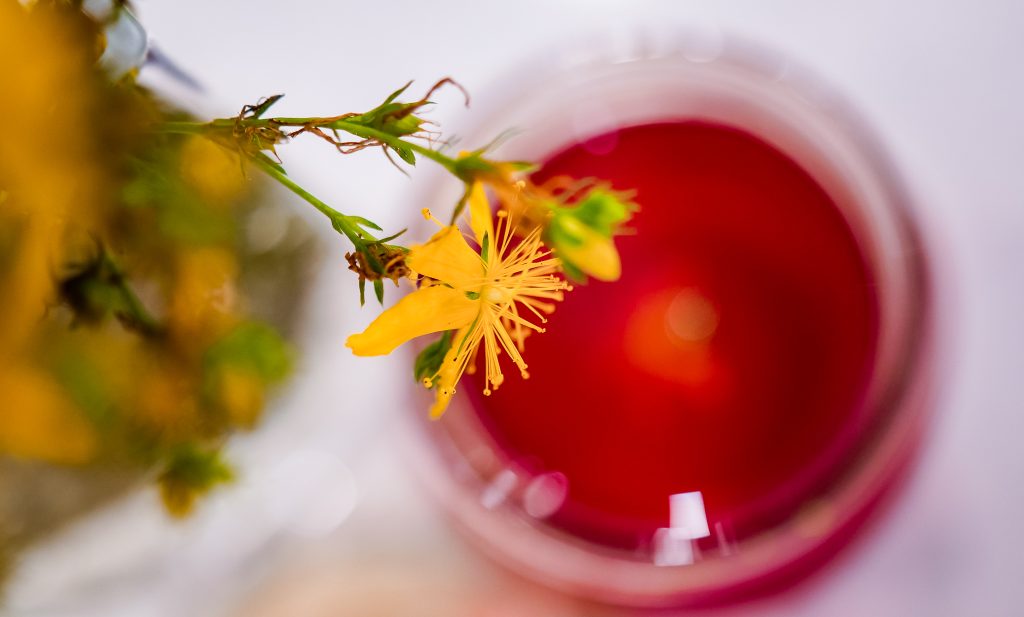
What oil should I use?
There are many pressed oils that will work quite nicely! (Expensive cold pressed oils will be wasted on the heating method)
- Olive oil – inexpensive, nourishing, and good for those with nut/seed allergies. It does have a stronger scent, but is my personal favourite for medicinal ointments.
- Sunflower oil – inexpensive and neutral in scent.
- Almond oil – excellent for dry and sensitive skins, light scent. A more expensive choice.
- Grapeseed oil – best for oily skins as it is light and easily absorbed. A more expensive choice.
What herbs should I use?
Here is a short list of some great herbs to try out for the first time. It is such an amazing feeling to go outside and pick fresh plants for your oil. The trick here is to let your herbs wilt first before adding to the oil. Wilting allows some of the water content to dissipate, preventing your oil from going “off” – rancid or moldy.
- Calendula petals (Calendula officinalis) – Infuses the oil with a beautiful golden orange colour. Amazing for all types of skin healing, a mild anti-microbial.
- St. John’s Wort flower (Hypericum perforatum) – Infuses the oil an amazing red colour. This oil has great success with nerve pain and aching joints. It is also an excellent remedy for the pain and scar reduction of minor burns. It is also anti-viral.
- Rose petals (Rosa spp.) – Pink and deliciously scented, great for cosmetic use and for calming & relaxing remedies.
- Comfrey (Symphytum officinale L.) – Sometimes called knitbone, this amazing green salve has been used traditionally to support superficial wounds, breaks, sprains, bruises, sprains & strains.
- Chickweed (Stellaria media) – Another lovely green salve which offers soothing relief to hot rashes, bug bites, wounds, diaper rash or any type of itchy skin condition.
- Plantain (Plantago) – This healing green salve aids in stings, bug bites, minor wounds, scratches, rashes and dry, irritated skin.
- Goldenrod (Solidago) – Is used topically for muscle cramps and sore muscles. Bonus: can be use to make salad dressing.
How do I infuse my Oil?
Traditional Sun method: my favourite!
This is such a simple way to make your oil! It is also the oldest and highest regarded way to make your infused oil. Simply fill a clear, wide mouthed jar ½ to ¾ with chopped herb, then top with oil. Shake gently to be rid of any air bubbles and ensure all herbs are covered with oil. Steep in sunny window or outside in the full sun, for approximate four – six weeks, shaking gently each day. Strain and pour into a sterilized storage jar and keep in a cool dark cupboard. Don’t forget to label and date!
Note: There are also Quick Pan and Slow Cooker methods if the infused oil is required quicker.
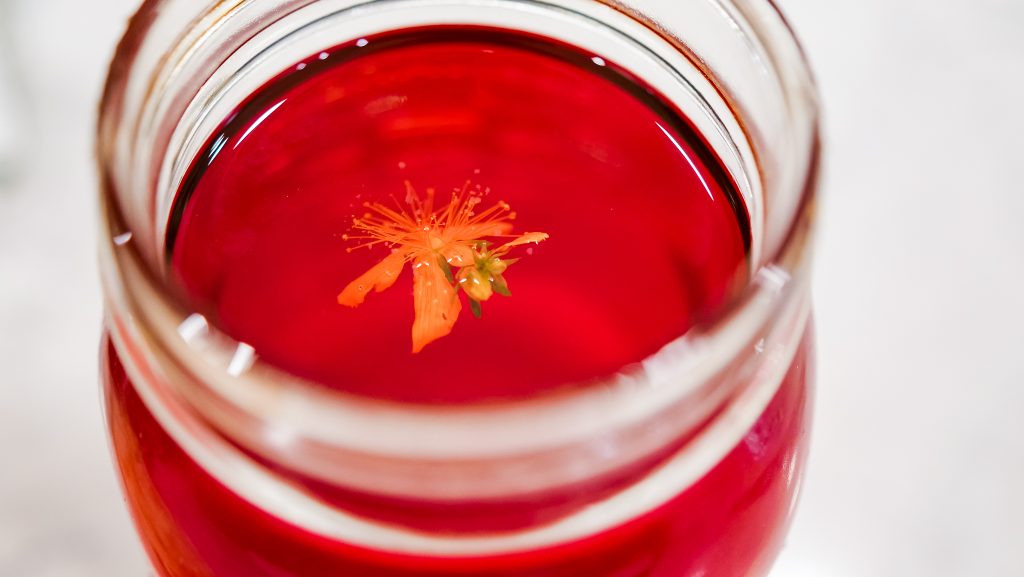
How Do I Make a Salve/Ointment?
Once you have your beautiful solar infused oil you are ready to make your salve… Now this is the magical part!
Take one cup of your infused oil and ¼ cup of beeswax; add to a stainless steel pot and place on burner. Heat low and slow until all the beeswax has melted. Test consistency of salve by taking a spoon full and placing in the freezer for ~5 min. If salve is too hard you can simply add a titch more infused oil to the pan, if too soft simply add a titch more beeswax to pan and melt. Your salve is now ready to pour into sterilized jars and let cool.
Voila! You have made your first salve – Whoot! Whoot!
Photos provided by Serena Mor
Chickweed: Materia Medica
Chickweed
Botanical name: Stellaria media
Pertinent Information on the Plant
- Skin irritations
- Eye inflammation (poultice for Glaucoma inflammation)
- Mild diuretic (increases urine flow)
- Kidney disorders
- Vulneraries
- Anti-microbials (destructive to microbes)
- Anti inflammatory
- Demulcent (soothing action on inflammation, especially of mucous membranes)
- Emollient (softens and soothes the skin)
- Anti rheumatic
- Alterative (blood purifier)
- Antipyretics (reduce or prevent fevers)
- Expectorant (facilitates removal of secretions)
- Antitussive (controlling or preventing cough)
- Psoriasis
- Eczema
- Acne
- Can be used as an ointment (combines especially well with marshmallow)
- Cuts and wounds
- Lungs
- Stomach
- Nutritive (rich in vitamins and minerals; a source of easily assimilated nutrients)
- High in calcium, potassium and iron
- Urinary tract infections
- Curbs obesity
Habitat and Growing area
- Native to Eurasia, especially anywhere moist cultivate soil
- Naturalized in North America
Extra Notes
- Chickweed is a remedy to use in times of transition. It supports a person in the first stages of grief, helping to assimilate a situation that is unexpected or where the circumstances are unforeseen. It is gentle and unassuming, yet surprisingly strong and insistent.
(Photos of Giant Chickweed)
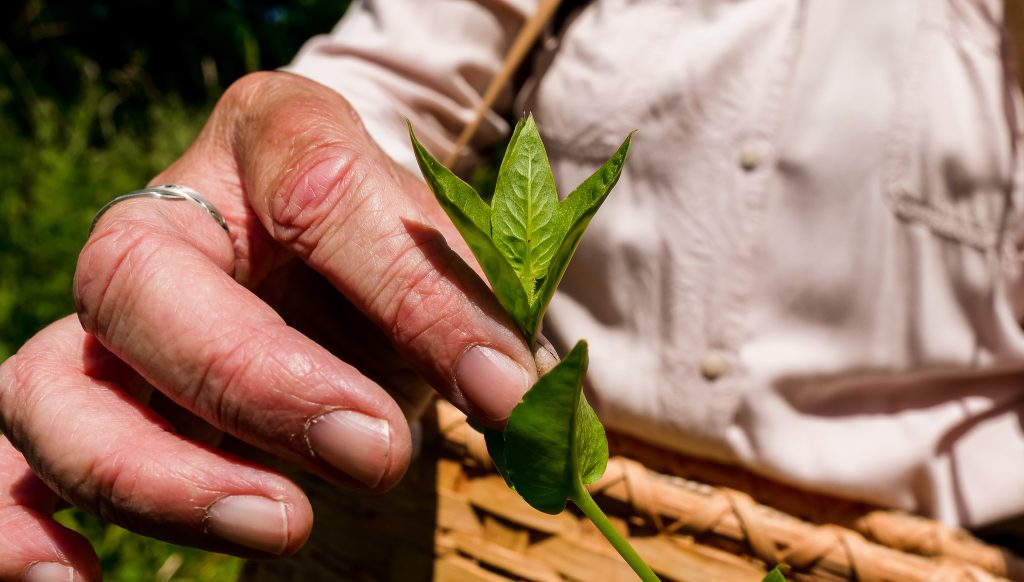
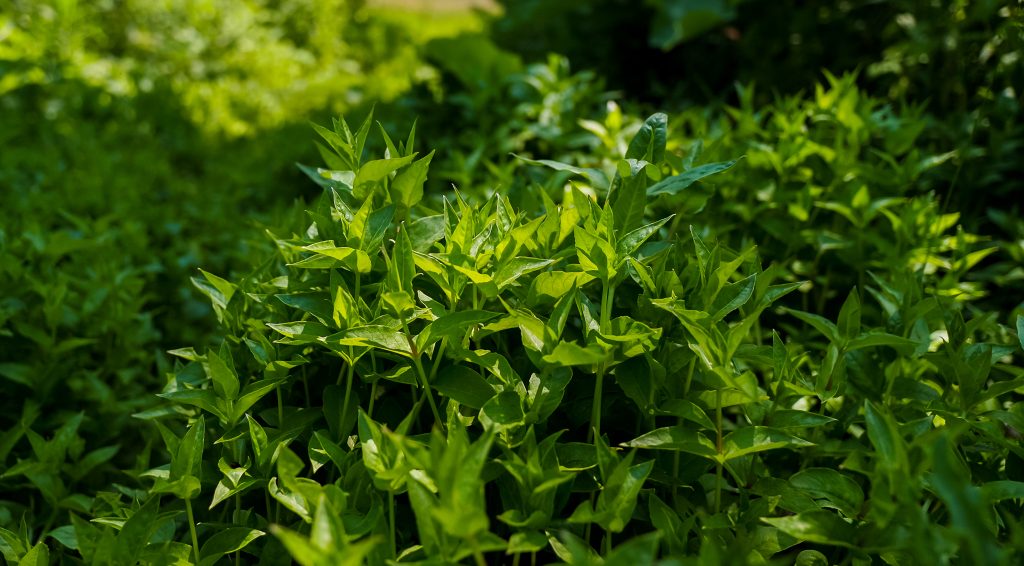
Reference Books:
Holistic Herbal, by David Hoffmann
Pages: 77-79, 138, 145, 160, 177, 191, 242
The Way of Herbs, by Michael Tierra
Pages: 13, 33, 34, 35, 118, 119
The Complete Encyclopedia of Herbs, by Nico Vermeulen
Page: 299
Family Herbal, by Rosemary Gladstar
Pages: 19, 55, 100, 102, 103, 105, 227, 284, 303, 323
Peterson Field Guide: Easter/Central Medicinal Plants and Herbs, by Steven Foster and James A. Duke
Pages: 48, 49
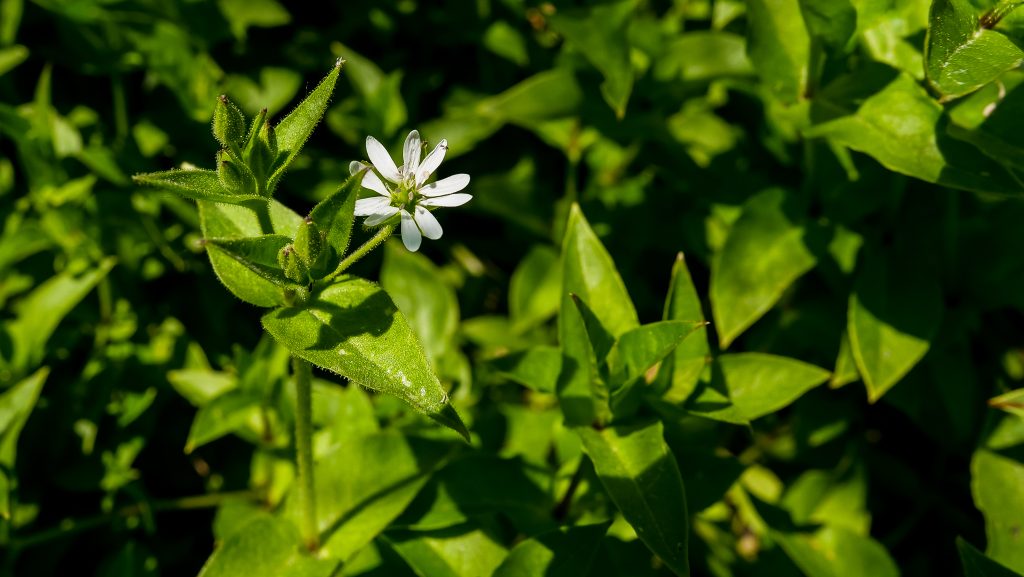
Medicinal Mushrooms
An Ancient Medicine
The use of mushrooms as food and medicine stretches back thousands of years, and can be observed in every culture of the world. Recently, a growing body of scientific and clinical evidence has amassed which supports many facets of the traditional use of mushrooms as medicine. Mycotherapy – the science of healing with mushrooms – is fully incorporated into traditional Western herbalism, as well as Traditional Chinese and Japanese medical systems, where mushrooms have always been highly revered as powerful healing agents for a wide variety of ailments and illnesses ranging from acute to chronic. Dr. Walter Ardigò, physician and researcher specializing in mycotherapy, suggests that mushrooms have such a strong affinity for so many diverse disease conditions in the human organism because of their biological similarities to human beings:
“Medicinal mushrooms are more similar to human beings than to plants. Like human beings, they need oxygen to live, eliminate carbondioxide and have no absolute need for light. The two also have similar biological mechanisms, such as immunity, cleansing and elimination of excess fluids” (Ardigò: 2017, 20).
Fungi play innumerable essential roles in maintaining the health and functionality of the world’s diverse ecosystems. It may surprise you, but the largest living being on earth has been declared to be a 2,384 acre large mycelial network (of the species Armillaria ostoyae, also known as honey mushrooms) located in the Blue Mountains of the state of Oregon. Fungi are responsible for processes involving the transmission of information amongst living organisms; they do this by way of electrical impulses that are sent underground through long, thread-like structures called hyphae, which expand to form mycelial networks. Many plants rely on mycorrhizal networks, which facilitate symbiotic associations between plants and fungi. Mycorrhizal networks serve to connect plants together and transfer essentials such as water, carbon, nitrogen, and a host of other nutrients and minerals.
Fungi also play an absolutely pivotal role when it comes to natural processes involving breakdown, decay and regeneration (e.g. by way of returning nutrients to the air and soil). Fungi do no simply decompose, but more accurately work to recompose elements of the environment. Fungi thereby make possible many of the processes of natural evolution. Fungi can be said to occupy a middle ground between the living and the dead; they are what allow for the continuum of coming into being and passing away to exist in the first place. As mycologist Peter McCoy expresses:
“Along the border of living and dying, mycelia sense and digest, interpret and destroy. More visibly than the bacteria with which they work, the fungi walk between worlds, acting as custodians of the darkness. Some species are so intimately tied to decay that they primarily live and fruit from dead animal parts” (McCoy: 2016, 76).
The Power of Mushrooms
That fungi are “custodians of the darkness” is suggestive of the fact that, when used as medicine, mushrooms can be helpful in a wide variety of psycho-emotional disorders, including many varieties of anxiety and depression, trauma and grief. As we will see, mushrooms such as Reishi can help to bring our unconscious defense patterns to light, making the darkness conscious through the metabolization of emotional experience. Additionally, when we understand the role that fungi play in decomposition and regeneration, we can also begin to understand how and why medicinal mushrooms prove so useful in diseases such as cancer and opportunistic infections such as might be associated with HIV. Both of these conditions involve uncontrolled, proliferative growth that the body is unable to keep in check. Medicinal mushrooms act in such a way as to regulate the functioning of the immune system, keeping such pathological conditions in check or preventing their onset in the first place.
Many of our medicinal mushrooms act as adaptogens. In general, adaptogens serve to strengthen the natural defenses of the body, and help the body adapt to non-specific stressors (including physical performance and endurance, as well as psychological and emotional stress). Adaptogens have a normalizing or balancing effect on the whole organism, helping to promote equilibrium amongst different body systems and processes. Many adaptogens have a direct strengthening and rehabilitative effect on the adrenal glands, are known to help to regulate blood sugar levels, and to balance and stabilize hormone levels. Used in moderation, adaptogens are generally very well tolerated by most people and help to promote an overall harmonizing and tonifying effect on the body and mind.
Shiitake
Lentinula edodes
Shiitake is a well-known culinary and medicinal mushroom that has been used in Asian cuisine for at least 2000 years, with cultivation techniques originating in Japan about 700 years ago. The name “shiitake” is derived from the Japanese words “shii” meaning oak, and “take” meaning mushroom: suggesting that shiitake is the mushroom that grows on oak trees. Shiitake is the second most consumed mushroom worldwide, second only to agaricus mushrooms. In Japanese culture, shiitake is considered to be a tonic food substance which serves to increase energy, foster the resilience of the body, reduce the susceptibility to chronic degenerative diseases, aid in convalescence, and slow the aging and deterioration process.
Many clinical studies on Shiitake focus on its production of the beta-glucan lentinan. Beta-glucans are a type of fiber that has an affinity for promoting the health of the heart, regulating the function of the immune system, and balancing cholesterol and blood sugar levels (shiitake is known to be an excellent food for diabetic patients). Lentinan is a unique beta-glucan that is found in shiitake mushrooms, which has been given increasing attention in recent years due to its utility in assisting in the treatment of cancer and HIV infection. Many of the medicinal properties of lentinan relate to its ability to stimulate macrophages (a type of white blood cell in the immune system that engulfs and digests pathogens including cancer cells, foreign substances and harmful microbes), T-cells (which target specific foreign particles in the body), B-cells (an important component of the adaptive immune system), and NK cells (essential to the functioning of the innate immune system). Researchers have also focused on shiitake’s production of the polysaccharides LEM and LAP, which possess significant antitumor activity. LEM has been shown to stimulate the proliferation of a specific type of T-cell which can help to neutralize hepatitis and slow and prevent the rapid development of HIV infection. Shiitake possesses anti-viral and antioxidant properties, in part due to the presence of the essential trace mineral selenium. Selenium plays a role in many bodily functions, especially maintaining thyroid hormone metabolism and DNA synthesis, safeguarding the body against oxidative damage and infection. Shiitake is also useful in diseases of the intestine, respiratory tract, liver, bones and teeth. It has been called on for centuries as a household remedy to help treat flu and fever, coughs and colds and allergies.
There is a growing body of research on shiitake mushroom, which was the first mushroom to receive in depth research by modern scientists. As Ardigò explains:
shiitake “became renowned in 1964, after the Japanese health authorities decided to promote a series of epidemiological studies on the prevalence and distribution of the main chronic diseases throughout the country. The results revealed a very peculiar situation: in two areas of the country, disease was almost entirely absent, and the population was very long-lived” (Ardigò: 2017, 287)
The homeopath Massimo Mangialavori relates that:
“there are many myths and customs associated with shiitake. One belief is that this mushroom grows best in the company of other nurse logs, rather than by itself. Some say the mushroom is sensitive to the attitude of those who tend the mushroom: positive people allow it to flourish; disagreeable people discourage its growth” (Mangialavori: 2017, 263).
Maitake
Grifola frondosa
The general uses of maitake mushroom include the treatment of obesity (the alpha-glucosidase inhibitor contained in maitake decreases the amount of starch that is digested into sugar), diabetes type 1 and 2 (maitake lowers blood glucose levels and enhances insulin sensitivity), a wide variety of tumors but especially those of the stomach and lungs (maitake enhances macrophage activity in the body), leukemia, allergies, and HIV. Maitake has an affinity for conditions of the heart, including hypertension and high VLDL and HDL cholesterol levels. It is also known as a hepatoprotective mushroom, serving to enhance the overall health and functionality of the liver while simultaneously protecting it from damage. It is widely used in hepatocellular cancer and other pathological and chronic conditions that affect the liver, such as hepatitis.
Herbalist Richard Bray comments on the geography and preferred growing conditions of maitake and on the origin of one of its common names, hen of the woods:
“Maitake grows primarily at the base of oak trees in eastern North America, China, and Japan. This polypore mushroom starts as a small fruiting body, about the size of a potato, and when mature reaches up to 2-7 cm across. They grow especially big in Japan, often reaching 45kg. It is known as the “king of mushrooms” there with good reason! Maitake mushrooms grow multitudes of overlapping grayish-brown fronds, which give it the appearance of a hen sitting in the woods, hence the common name” (Bray: 2020, 48).
Lion’s Mane
Hericium erinaceus
Lion’s mane is most well known for its ability to induce brain tissue regeneration and to enhance perceptual capacities. If you look at either fresh or dried lion’s mane, you’ll observe that it appears structurally similar to the human brain and its nerve fibers – a clear example of the doctrine of signatures. Lion’s mane is used in the treatment of such issues as dementia, Parkinson’s, and diabetic neuropathy. The polysaccharides and polypeptides in Lion’s mane help to enhance immune function and have proven useful in stomach, esophageal, and skin cancers. Lion’s mane can pass through the blood-brain barrier and as such is quite valuable for targeting lyme disease spirochetes that have invaded the brain. Lion’s mane directs the spirochetes into the bloodstream where there’s a chance of them being eradicated. There are a growing number of studies that suggest the utility of lion’s mane in treating a variety of types of depression and mood disorders, including hormonally related anxiety disorders.
Indications from Traditional Chinese Medicine include memory disorders, difficulty concentrating, and a general picture of deficient cognitive function and abilities. Traditional Chinese Medicine also recognizes the use of lion’s mane in promoting and maintaining the health of the kidneys, heart, liver, lungs and spleen. It is thought to enhance overall strength and vitality, and facilitate ease of digestion. Ardigò comments:
“in traditional Chinese medicine it has long been used to treat diseases of the stomach, nervous system and nerves, to improve the immune system and to restore the natural strength of the body, because it has an important action in improving energy and cognitive functions. To highlight its many benefits for physical and cognitive activities, the ancient sages have even coined the saying “Hericium nerves of steel and the memory of a lion”” (Ardigò: 2017, 280).
Reishi
Ganoderma spp.
Lingzhi, the name given to ganoderma species in Traditional Chinese Medicine, literally translates as “Supernatural Fungus.” Reishi is also known as “The Mushroom of Immortality.” The physician and scholar Li Shi Zhen (1518 – 1599) wrote that reishi is:
“biter in taste, warm in nature, not poisonous, and replenishes the life energy, or qi of the heart. It increases intellectual capacity while nurturing the body, and banishes forgetfulness; taken over a long period of time, agility of the body will not cease; it keeps the body light and youthful like a celestial being” (quoted in Mangialavori: 2017, 284).
Reishi acts as a cardiovascular, lung, immune and nervous system tonic and restorative, improves circulation and oxygen utilization, promotes deep sleep and undisturbed thought patterns, generates a heightened sense of peacefulness, helps to process stagnant emotions held in the body, and deepens one’s trust in one’s own innate capacities and potentials. As Ron Teeguarden expresses it:
Reishi “calms the mind, eases tension, strengthens the nerves, improves memory, sharpens concentration and focus, [and] and builds willpower”, thus earning it the title “the Mushroom of Spiritual Potency” (Teeguarden: 2000, 88).
Reishi is a medicine that typically is best worked with over a longer period of time, having cumulative effects that gradually build the resilience of our nervous system and transforming the ways in which we relate to and perceive life itself. Reishi is highly esteemed as a medicine in virtually all of the cultures that have access to it, as Ardigò writes:
“Ganoderma, in fact, is known more or less everywhere, not only in Asian countries. For example, research shows that the indigenous peoples of Mexico used it in a number of diseases and in particular for heart disease, both for prevention and treatment” (Ardigò: 2017, 258).
In Traditional Chinese Medicine, reishi is considered to be a supreme Shen tonic, which is to say that it has a special affinity for the spirit, mind, and emotional body. Shen is considered to be the spirit that resides in the heart, or the heart-mind connection. Hence reishi’s reputation as an adaptogen involves its ability to teach us how to develop the inner resources with which we can navigate emotional and spiritual conflicts, and to confront and effectively work through a variety of psychological blockages and obstacles. Reishi has a long reputation in Daoist spiritual traditions as a medicine that promotes wisdom, longevity, groundedness and calmness. As a long living mushroom known to grown in old and mature forests, reishi carries with it the ability to connect us to the nature’s cycles of life, death and rebirth.
Reishi is not only useful for the emotional and spiritual levels of the mind, but also for sharpening cognitive and intellectual abilities and improving concentration and focus. Ardigò comments:
“Ganoderma has also been used at a mental and psychological level, to reduce lapses in concentration, to sharpen intelligence, to improve memory, to strengthen will-power, to relax a distressed and restless mind” (Ardigò: 2017, 258)
Other uses of reishi include: coronary heart disease, heart arrhythmias, feelings of tightness and constriction in the chest, chronic asthma and bronchitis, altitude sickness, vertigo, hypertension, high cholesterol, insomnia, diabetes, hepatitis, cancer, allergies, chronic fatigue syndrome and a variety of conditions involving chronic pain (Mangialavori: 2017, 284 – 285).
Looking into the Future
The future is bright when it comes to medicinal mushrooms. Every year, a greater number of people are becoming involved with the powerful medicine from the kingdom of fungi. From mushroom cultivation to mycoremediation (the use of fungi to help repair and restore damaged and polluted ecosystems), from the treatment of cancer and diabetes to complex emotional and psychological conditions, mushroom medicine can no longer be ignored. More than a passing trend, mushroom medicine is being shown, both by practitioners of natural healing and research scientists from around the world, to offer sustainable and lasting solutions to a wide variety of personal and social health problems. A great deal more will be revealed to us in the years to come as clinical and scientific exploration moves forward and continues to expand in novel and exciting directions.
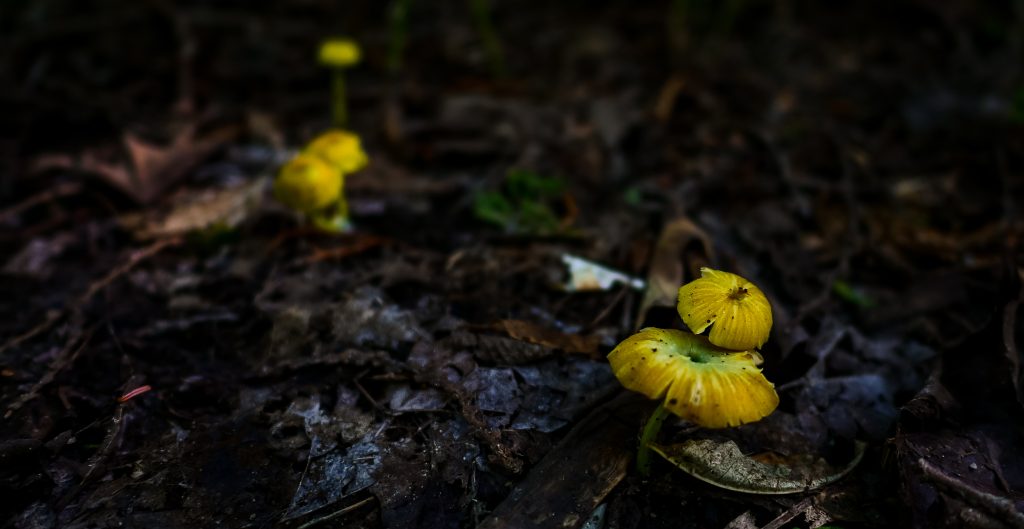
References and Recommended Titles:
- Ardigò, Walter. Healing With Medicinal Mushrooms: A Practical Handbook. Self published: 2017.
- Bray, Richard. Medicinal Mushrooms: A Practical Guide to Healing Mushrooms. Hamburg: Monkey Publishing, 2020.
- Mangialavori, Massimo. Materia Medica Clinica vol. 2: Fungi. South Carolina: CreateSpace, 2017.
- McCoy, Peter. Radical Mycology: A Treatise On Seeing And Working With Fungi. Portland: Chthaeus Press, 2016.
- Rogers, Robert. The Fungal Pharmacy: The Complete Guide to Medicinal Mushrooms and Lichens of North America. Berkley: North Atlantic Books, 2011.
- Sheldrake, Merlin. Entangled Life: How Fungi Make Our Worlds, Change Our Minds & Shape Our Futures. New York: Random House, 2021.
- Stamets, Paul. Mycelium Running: How Mushrooms Can Help Save the World. Berkeley: Ten Speed Press, 2005.
- Teeguarden, Ron. The Ancient Wisdom of the Chinese Tonic Herbs. New York: Grand Central Publishing, 2000.
Photos Provided by Serena Mor
Magic, Healing & Ritual: Herbal Tradition in the Italian Renaissance
Angels, Demons, Herbs and Magic
The ancient, and now largely lost and forgotten, tradition of illuminated herbal manuscripts can tell us much about the practice of herbal medicine throughout antiquity. It was not uncommon for such manuscripts to contain drawings of angels and demons, mythological figures and beings of the celestial hierarchies. Witchcraft and magic were taken to be very serious matters, not only when it came to cultural and religious belief systems, but also when considering the proper training of a physician. As one author writing on traditional Italian healing systems in antiquity has commented:
“Physicians were educated with the notion that drugs had occult powers to affect the body in special ways. It was common belief that demons invaded the soul, and that certain herbs had the property of chasing away devils and demons” (Silberman: 1996).
Expert Italian Renaissance physicians were required to be competent in astronomy and astrology “since the position of the celestial bodies contributed to the occult qualities of a medicinal herb” (Silberman: 1996). The Renaissance, as reflected in the writings of prominent philosophers of the time such as Giordano Bruno and Marsilio Ficino, saw a resurgence of pagan sensibilities. Renaissance thought and imagination embraced an animistic worldview that threatened the established, conservative branches of Christianity and their associated medieval superstitions. As the archetypal psychologist James Hillman writes:
“Renaissance animism led to pluralism, which threatened Christian universal harmony. For when inner soul and outer world reflect each other as enlivened souls and substances, and when the images of these souls and substances are pagan, then the familiar figures of Christianity diminish to only one relative set among many alternatives.”
This co-reflection or mirroring of the inner soul and the outer world are the life-stream of the ancient pagan and Renaissance herbal medical traditions of Italy and surrounding regions. This conception of a pluralistic world and of the enlivened human soul seen as a microcosmic reflection of the greater soul of nature helps us to understand the associations and correspondences that were made between particular herbs, supernatural, celestial, and divine beings, and the actions of the planetary bodies in the medicine of the time.
Medicina Antiqua Illustration depicting mandrake harvesting
Christianity and Paganism
In the Middle Ages there was much scorn for the Pagan worship of Goddess nature (who is synonymous with Venus or Aphrodite). This too is reflected in the medical manuscripts of the day. Consider, for example, the “editing” or erasure of an invocation to Gaia found in an early 13th century Viennese manuscript, Medicina Antiqua, by an unknown monk living sometime later in the Medieval period. The erasure in question was found on the back of an image depicting the invocation of the divine mother.
“She stands in classical clothing on the banks of a river in which the river god Neptune can be seen sitting with his trident on a snake. Mother Earth holds a cornucopia in her arms and is surrounded by stylized palms and fantasy plants.” (Müller-Ebeling: 2003, 184).
The fifty-one line invocation on the back of the image originally began “Sacred Goddess Earth, bringer of natural things…” but was changed to “To the Sacred God…” by the monk in question. In the 15th century, much of Northern Europe “fought hard for a reformation of the religious and moral foundations of spiritual life” but in sunny Renaissance Italy there was to be found an opening and renewal of the senses, a “rediscovery of classical sculptures of the gods as well as to texts that were bought from the cloisters by…Cosimo de’Medici” (Müller-Ebeling: 2003, 180).
Italian philosophers and artists of the time were concerned with understanding and exploring nature’s beauty and “the congenial side of the human character [was given much greater attention than was] the sinful” (ibid). A comparison of Germanic and Italian art of this period can be quite revealing; the former tradition is full of images of infernal hells (e.g. Hieronymus Bosch), the latter dedicated to an exploration of anatomy and perspective rooted in a renewed pagan grace (e.g. Leonardo, Raphael, Michelangelo). For confirmation of this claim, one can for example study the encoded pagan symbolism present in Michelangelo’s anatomical drawings.
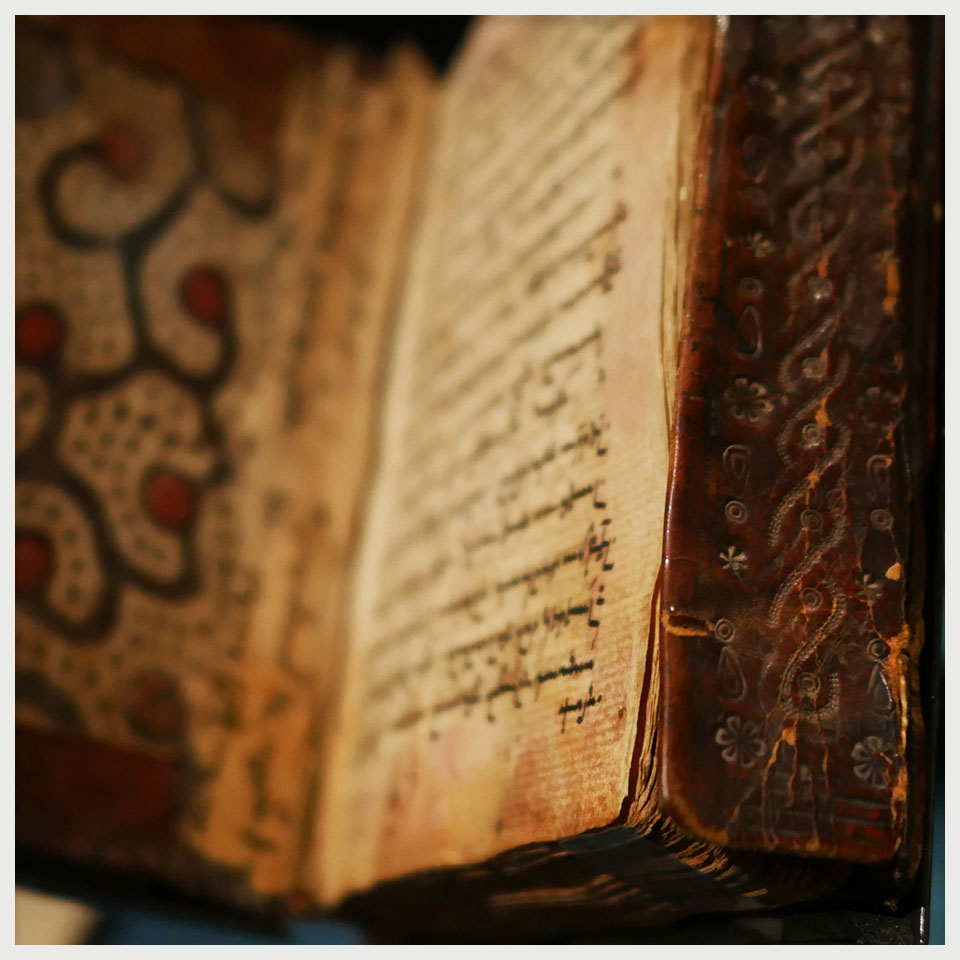
Pictured: 17th Century Bible
Given the church’s disdain for nature worship and resurgent pagan sensibilities, it is no wonder that Giordano Bruno, the Renaissance magi who considered medicine to be a branch of natural magic, was eventually burned at the stake for heresy (in particular, he was put to death for his belief in an infinite number of worlds). In his treatise De Magia Bruno provides a list of ten definitions of the words magic and magician. The one that especially interests us reads as follows: “Magician: someone who does wondrous things merely by manipulating active and passive powers, as occurs in chemistry, medicine and such fields; this is commonly called ‘natural magic’” (Bruno: 1998). For Bruno, the natural world and the divine world reflected and interpenetrated each other. To use and to understand herbs was to know, in the sense of gnosis, the action of divinity in nature; it was also to realize that through the work of learning to read the book of nature that one in turn serves to illuminate the divine:
“… for as the divinity descends in a certain manner inasmuch as it communicates itself to nature, so there is an ascent made to the divinity by nature, and so through the light which shines in natural things one mounts upward to the life which presides over them” (Bruno quoted in Yates: 1940, 183).
Bruno also gives us an insight into the common practice of using incantations and physical traces left behind by or belonging to a person to affect a cure or to set a curse in motion:
“Wicked or poisonous magic: incantations are associated with a person’s physical parts in any sense; garments, excrement, remnants, footprints and anything which is believed to have made some contact with the person. In that case, and if they are used to untie, fasten, or weaken, then this constitutes the type of magic called ‘wicked’, if it leads to evil. If it leads to good, it is to be counted among the medicines belonging to a certain method and type of medical practice. If it leads to final destruction and death, then it is called ‘poisonous magic’ (Bruno: 1998).”
Hellebore and Mandrake
Not all figures of the Italian renaissance shared the magical and animistic views of Bruno, and the more “rational” voices of the time thought that Bruno and his ilk were quite mad. But even among the more conservative authors, herbal medicine was still widely referenced and bound up with mythological associations. The famous poet Torquato Tasso took issue with Bruno’s worldview and in discussing his work quoted Erasmus’ phrase “Anticyram navigat”, literally ‘set sail for Anticyra’. Anticyra was a place that was known to contain an abundance of the herb hellebore (Veratrum album), then used as a cure for madness (Yates: 1940, 191)). Let us turn to consider this herb, and the related mandrake (Mandragora officinarum), both of which can serve to give us some insights into the practices and belief systems that existed in the Italian herbal tradition, especially the tradition maintained by the rhizotomes, or root diggers, the magician-herbalists of the ancient world.
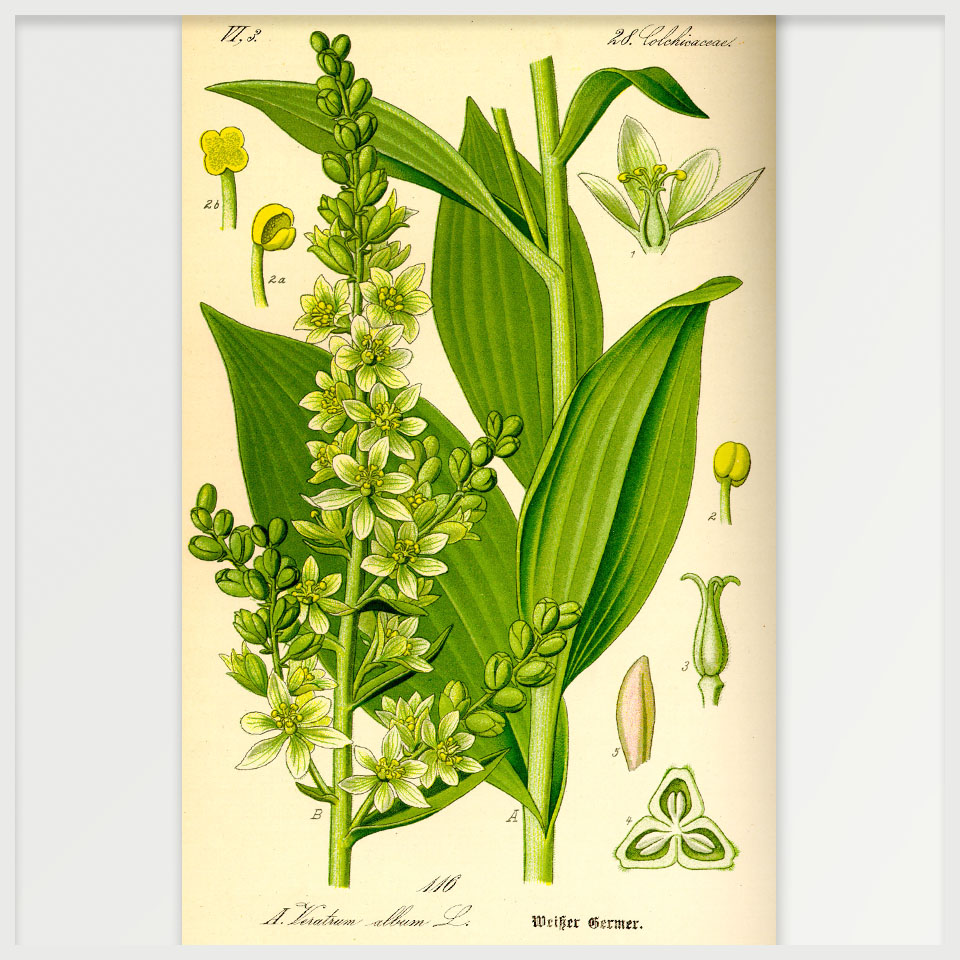
Hellebore (Veratrum album, white hellebore, veratro bianco in Italian); Helleborus niger, black hellebore) was a very important herb not only in ancient and renaissance Italy but also in Greece, France, and Egypt, among other places. Theophrastus maintained that the two types of hellebore were the most important medicinal plants that were used in ancient Greece and Rome. Contemporary ethnobotanist Christian Rätsch says of the hellebores: “they were the central medicines of the rhizotomes, diggers who nourished the magical plants with shamanic rituals. Hellebore was a sacred plant of the gods” (Rätsch: 2005, 525). Rätsch speculates that name helleboros is derived from hella-bora, which means “food of Helle.” The Hellespont is named after Helle who fell into this body of water after narrowly escaping death. Helle’s stepmother Ino resentfully roasted all of the seeds in the region of Boeotia so that a massive famine would result; this famine she blamed on Helle and her brother Phrixus, the stepchildren she so hated, in a ploy to have them killed. However, a flying golden ram sent by their birth mother Nephele saved these two. Helle fell from the ram into the Hellespont, where she was saved by Poseidon and metamorphosed into a goddess of the sea (in some less interesting accounts of the myth Helle simply drowned).
Rätsch argues that the most important documented use of this herb involved turning the root into a snuff. This is because “the artificially induced sneezing (the German name nieswurz means “sneezing root”) was believed to cause the demons of sickness to leave the body” (ibid). The Greeks and the Romans used the white hellebore1, which was ritually harvested in a way similar to the mandrake (Mandragora officinarum). Pliny gives a detailed account of the uses of white hellebore, which also gives us insight into the nature of medical treatment in the Rome of his time:
The body must be prepared beforehand for seven days by spiced food and abstention from wine, on the fourth and third day through vomiting, on the day preceding through fasting. White hellebore is also given in something sweet but is best in lentils or in a mush… The emptying begins after about four hours; the entire treatment is over in seven hours. In this manner, white hellebore heals epilepsy, …dizziness, melancholy, insanity, possession, white elephantiasis, leprosy, tetanus, tremors, foot gout, dropsy, incipient tympanic water, stomach weakness, charley horse, hip pains, four-day fever, if this will not disappear in any other way, persistent coughing, flatulence, and recurrent stomachaches (Pliny quoted in Rätsch: 2005, 527).
Consideration of the harvesting rituals common to hellebore and mandrake can give us interesting insights into the practices and beliefs of the rhizotomes as they engaged their art in Greek and Italian herbal traditions. The harvesting of these two plants involved many preliminaries and precautions. “Naturally a weird story of perils incurred in obtaining a plant strengthened belief in its magic powers and added to its commercial value” (Randolph, 489). Theophrastus describes the practices of the root diggers in his History of Plants, with specific reference to the mandrake: “Around the mandragora one must make three circles with a sword, and dig looking toward the west. Another person must dance about in a circle and pronounce a great many aphrodisiac formulas” (Theophrastus quoted in Randolph: 1905, 489). He also mentions the necessity of standing with one’s back to the wind so as not to be exposed to strong odours that some plants may emit, and anointing any skin not covered by clothing as a means of protection and defense. Other practices involved the “digging of certain plants only by night, [and] avoiding the sight of certain birds” (Randolph: 1905, 489). There were variations on these practices that depended on the plant being harvested and the uses for which it was intended. While the mandrake was to be dug up with one’s back facing west, hellebore was to be dug with one’s back facing east. Theophrastus notes that the practice of repeating aphrodisiac formulas as part of the harvesting of mandragora shows great similarities to the practice of repeating curses when sowing cumin seeds (Randolph: 1905, 490).
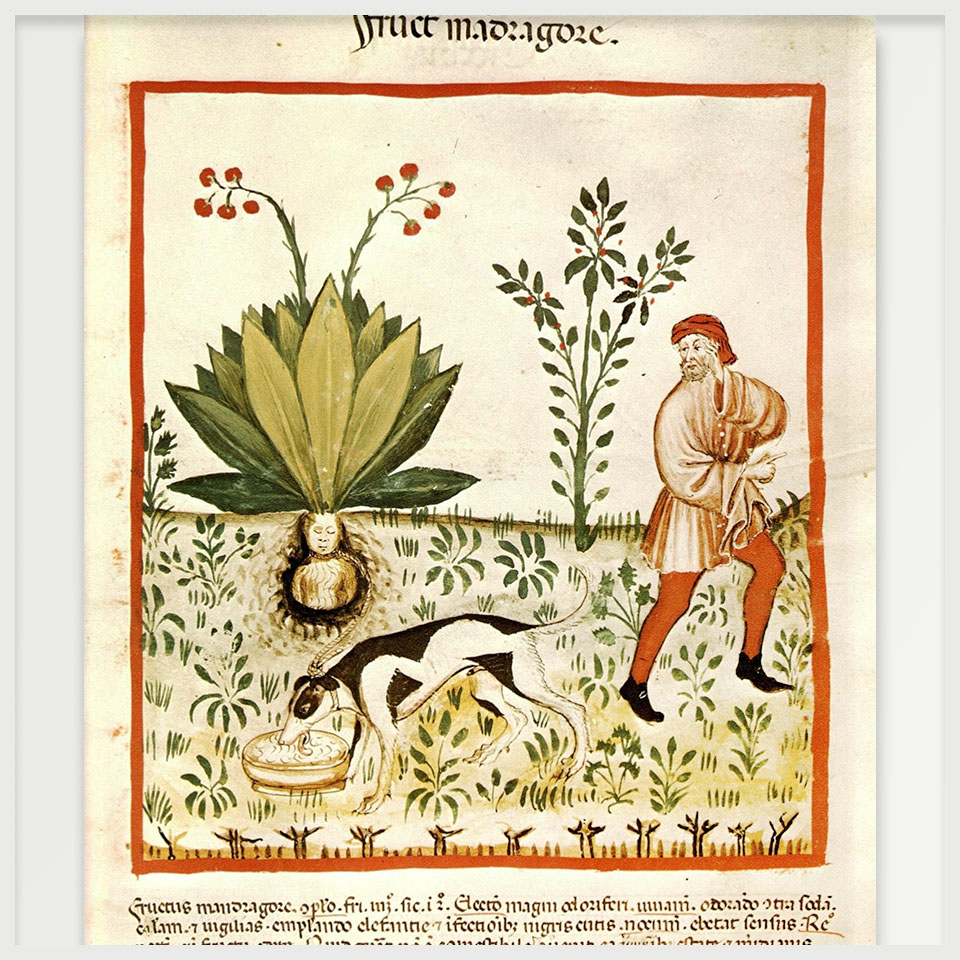
Mandrake Harvesting Illustrated in the Tacuinum Sanitatis manuscript, 1390
Pliny borrowed a great deal from Theophrastus and the account found in his Natural History of the practices of the root diggers and the harvesting of the mandrake in particular is one indication of this: “Those who are about to dig mandragora avoid a wind blowing in their faces; first they make three circles with a sword, and then dig looking toward the west” (Pliny quoted in Randolph: 1905, 490). We can notice however that Pliny says nothing of the “great many aphrodisiac formulas” that Theophrastus mentions in his account of the practices of the rhizotomes. Randolph suggests that “the omission by Pliny of any reference to aphrodisiac formulas is easily explained by his declaration that he will say nothing in his work about aphrodisiacs or magic spells except what may be necessary to refute belief in their efficacy” (Randolph: 1905, 490). This stance again speaks to the differences that existed in the ancient world between those who subscribed to the views and practices of natural magic and those who saw such a worldview as a breed of madness that must be rejected and defeated.
Aphrodisiacs were highly valued in Mediterranean herbal traditions, and one of the greatest of all of the aphrodisiacs was the mandrake. Rätsch comments that “in ancient times, the primary ritual significance of the mandrake was in erotic cults” (Rätsch: 2005, 348). However, only poor quality source material describing this usage remains and so detailed information about these practices is not available to us. Apart from its uses as an aphrodisiac, the mandrake was also widely used in medicine. Dioscorides:
A juice is prepared from the cortex of the bark by crushing this while fresh and pressing this; it must then be placed in the sun and stored in an earthen vessel after it has thickened. The juice of the apples is prepared in a similar manner, but this yields a less potent juice. The cortex of the root that is pulled off all the way around is put on a string and hung up to store. Some boil the roots with wine until only a third part remains, clarify this and then put it away, so that they may use a cup of this for sleeplessness and immoderate pain, and also to induce lack of sensation in those who need to be cut or burned themselves. The juice, drunk in a weight of two obols with honey mead, brings up the mucus and the black bile like hellebore; the consumption of more will take life away (Dioscorides quoted in Rätsch: 2005, 348).
The root diggers would only dig up the mandrake on the “day of Venus”, Venus of course being the Goddess of Love, which further suggests that one of the greatest virtues attributed to the mandrake in the ancient world was as an aphrodisiac, an agent in love magic/erotic rites (Randolph: 1905, 494). The mandrake is well known for its anthropomorphic appearance, and it is common in herbal traditions from around the world to attribute special healing powers to plants that resemble the human form (one can also think of the enormous sums that are paid in China even today for ginseng roots which look like human beings). Dioscorides and Pliny both make reference to a “male” and a “female” species of the mandrake but as Randolph clarifies “these terms, which the ancients applied to many plants, have nothing to do with sex, but signify more robust species (i.e., those having larger leaves, roots, etc., and attaining a greater height) and their opposites” (ibid).
The Goddess Circe
As we can see, herbal medicine in ancient and renaissance Italy, and throughout the Mediterranean region as a whole, was indissociably bound up with the workings of the gods and nature spirits. The Goddess Circe possessed a tremendous knowledge of herbs and, in particular, was regarded as a master of poisons (pharmaka). Her most famous plant was called Moly. To this plant were attributed psychoactive and aphrodisiac properties. Dioscorides referred to the mandrake as circeon, Mandragora Circaea being the herb that Circe used to transform Odysseus’ boat crew into “pigs.” (Müller-Ebeling et al. interpret this scene not in a literal sense but as an erotic transformation. The authors quote Apollonius: on the island of Circe “beasts, not resembling the beasts of the wild, nor yet like men in body, but with a medley of limbs went in a throng…such creatures, compacted of various limbs, did earth herself produce from the primeval slime…in such wise these monsters shapeless of form followed Circe” (Apollonius quoted in Müller-Ebeling: 2003, 117)). 19th and 20th century interpreters of the ancient literature (such as Dierbach and Kreuter) also take the Moly of Circe to be the mandrake. Theophrastus claimed that Circe lived in Lazio, a region in west-central Italy, where “the special medicinal herbs” were produced (Theophrastus quoted in Müller-Ebeling: 2003, 116). The sacred mountain of Circe, Monte Cicero, can still be visited today, on the Italian coast above Sicily. The early poet Aeschylus, according to Pliny, “declared that Italy abounds with potent herbs, and may have said the same of Circeii where she [i.e. Circe] lived. Strong confirmatory evidence exists even today in the fact that the Marsi, a tribe descended from Circe’s sons, are well-known snake-charmers” (Pliny quoted in Müller-Ebeling: 2003, 116).
Circe, goddess of death and guide of souls, was worshipped in groves. Apollonius notes that Circe’s groves, where executions were carried out, were lined with willows (Salix alba) and osiers/tamarisks (Tamarix spp.). Tamarisks and willows are well known medicinal trees. “The willow, or, more precisely, the white willow, was used for birth control; thus it was a typical witches’ plant” (Müller-Ebeling, 117). Two other plants sacred to Circe are the alder (most probably Alnus glutinosa) and juniper (Juniperus communis or Odorata cedrus, as it is recorded in Virgil’s Aeneid). Concerning the alder tree, it was said to surround Circe’s island (Aeaea or Eëa), located just south of Rome. Müller-Ebeling et al. comment:
“We can assume that there had been an archaic alder cult that by the Hellenic times had already been suppressed. Alders were considered transformed sisters of Phaeton, the son of Helios and brother of Circe” (Müller-Ebeling: 2003, 117). Juniper was Circe’s sacred incense and “therewith it is in the vicinity of archaic shamanism. Juniper is one of the oldest incense materials of the Eurasian shamans” (ibid).
Let us conclude our discussion of Circe by noting that though she has been described as compassionless and called the mother of darkness and horror, this noble sorceress was originally worshiped as a healing Goddess. As Giordano Bruno writes:
Ah, if only it pleased the sky, that for us today, like once long ago in happier centuries, this ever magical Circe would appear, who would be able to put an end to things with plants, minerals, poisons, and the magic of nature. I am certain, that despite her pride she was merciful with regards to our misery (Bruno: 1998).
Diana (Artemis) and Pan. Engraving after Annibale Carracci
What We Can Learn From This Symbiosis
To conclude, let us illustrate with another example just how bound up the practices of the healing arts were with the pagan pantheon of Gods and Goddesses – and consider how we can still learn from these sources of inspiration from the mythological imagination of the Renaissance. Consider Artemis/Diana, a woodland Goddess who served as the archetypal herbal healer throughout antiquity. She has very close ties to the animals of the forest, and oversees the wild hunt. Artemis is the goddess of the moon, the fierce protectress of the wild and of all of the life which courses through it, and it is she who governs the cycles of fertility and birth. Artemis’ garden is wild nature. Her role as a great shamanic healer is further brought to light through her representation as the “great she-bear, Ursa major, ruler of the stars and protector of the axis mundi (pole of the world) marked by the pole star at the centre of the constellation of Ursa Major” (Brooke: 1992). Artemis is closely associated with the artemisia plants, such as mugwort and wormwood (plants that help to enhance the clarity of consciousness, promote emotional resilience, and foster a refined sensitivity to and deepened awareness of our place in the world and our interactions with human and other-than-human nature). As explained in the Medicina Antiqua:
“There are three types of Artemisia. All three and their healing effects were discovered by the Goddess Diana. She transmitted this medicine chest to the centaur Chiron, who was the first to transform it into medicine. This is why these plants carry the name of Diana, or rather Artemisia” (Medicina Antiqua 13, fol. 32r).
When we read this and related sentiments, it becomes clear that without Artemis the tradition and practices of the Renaissance magi-herbalists would be inconceivable.
Healing was, in the Renaissance traditions here under discussions, associated with the qualities of grace and beauty. Artemis/Diana was said to be exceptionally beautiful, her beauty being comparable even to that of Aphrodite. Psychologist Ginette Paris suggests that Artemis sanctifies “solitude, natural and primitive living to which we may all return whenever we find it necessary to belong only to ourselves” (Paris: 1986, 124). In her capacity as a huntress and archer, she can bestow upon us the wild, atavistic power that can be utilized to resist the forces of domestication and domination. Artemis is the great protectress of flora and fauna, and thus she has a special bearing on the ecological issues that face living beings on the Earth today. It would be wise to look to her when making choices that will affect the future of the natural world.
“There are obviously many ways of entering into therapeutic contact with nature, but solitude and identification with nature through falling water, trees, or animals are cues that our contact is with Artemis rather than Dionysus, Demeter, or Aphrodite” (ibid, 127). The waters of the mountains and streams are also under the care of Diana, and if we are to re-enliven our sacred relationship to this elemental force then “perhaps, afterward, the nymphs, naiads, and nereids would return to inhabit our imagination and teach us the necessary respect for the waters of Artemis” (ibid). Let us not forget the mythological traditions of healing and the great bearing they can have on contemporary consciousness, let us take heed not to neglect the great Pagan wisdom of the wild imagination.
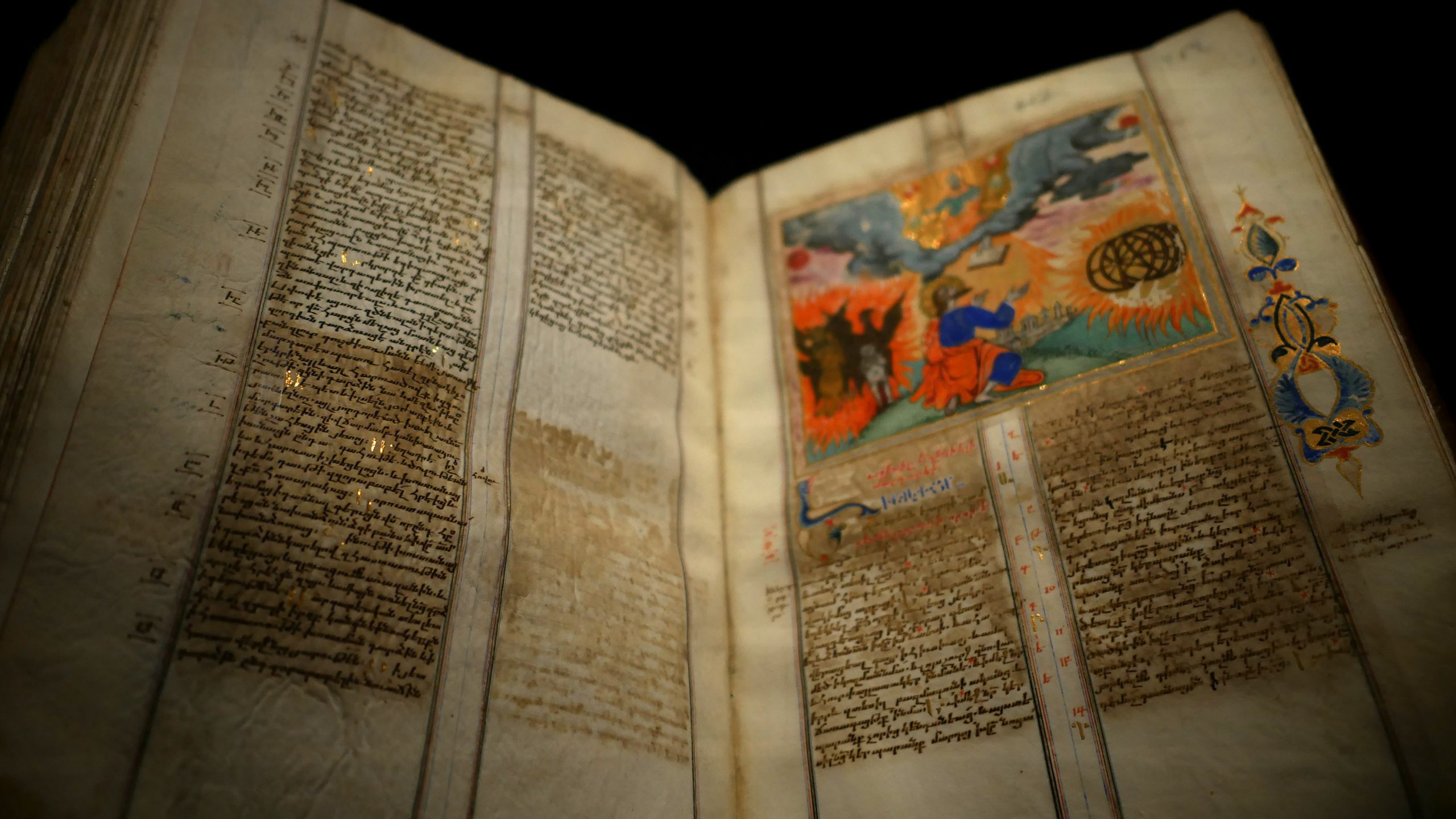
Bible page depicting the prophet Ezekiel’s Vision, 1648
Footnotes:
1 Daniel Schulke claims that black hellebore is “a poison of decided infamy; all parts of the plant render up potent venoms” (Schulke: 2017, 132). An extract of the rhizome was used in antiquity and into the medieval era as a “utensil of murder, most notably by King Attalus III of Pergamos” (ibid). Black hellebore contains the glycosides heleborin and hellebrin, which are chemically related to telo-cinobufagin (venom found in some species of toad skin). These glycosides slow the heart rate and affect cardiac muscle in a similar way to foxglove. The Key of Solomon the King contains a recipe for an incense to be used as part of a “spell for vivifying a talisman with the genius of Saturn” containing the stalks of black hellebore along with alum, assafoetida, scammony, sulphur, and cyprus ash (ibid).
Works Cited:
- Brooke, Elisabeth. A Woman’s Book of Herbs. London: Aeon Books, 1992.
- Bruno, Giordano. Cause, Principle and Unity: And Essays on Magic. Cambridge: Cambridge University Press, 1998.
- Hillman, James. Re-Visioning Psychology. New York: Harper, 1976.
- Müller-Ebeling, Claudia, Rätsch, Christian, and Storl, Wolf. Witchcraft Medicine: Healing Arts, Shamanic Practices, and Forbidden Plants. Vermont: Inner Traditions, 2003.
- Paris, Ginette. Pagan Meditations. Connecticut: Spring Publications, 1986.
- Randolph, Charles Brewster. ‘The Mandragora of the Ancients in Folk-Lore and Medicine.’ Proceedings of the American Academy of Arts and Sciences, Vol. 40, No. 12 (Jan., 1905), pp. 487-537.
- Rätsch, Christian. The Encyclopedia of Psychoactive Plants. Maine: Park Street Press, 2005.
- Schulke, Daniel. Veneficium: Magic, Witchcraft, and the Poison Path. San Francisco: Three Hands Press, 2017.
- Silberman, Henri. ‘Superstition and Medical Knowledge in an Italian Herbal.’ Pharmacy in History, Vol. 38, No. 2 (1996), pp. 87-94
- Yates, Frances. ‘The Religious Policy of Giordano Bruno.’ Journal of the Warburg and Courtauld Institutes, Vol. 3, No. 3/4 (Apr. – Jul., 1940), pp. 181-207.
Illustrations/Images:
- Medicina Antiqua Illustration
- 17th Century Bible: (photo provided by Serena Mor)
- Veratrum album Illustration
- Mandrake Harvesting
- Diana (Artemis) and Pan
- Prophet Ezekiel’s Vision: (photo provided by Serena Mor)
Cannabis: Medicine or Poison?
An Exploration from the Perspectives of Traditional Systems of Healing
With the legalization of cannabis in Canada, we are seeing a growing public acceptance of this herb, an enormously expanding “cannabis industry”, and a variety of claims being made about its medical efficacy and utility. There are many well-documented traditional medical uses of cannabis, going back many hundreds of years, along with a growing body of contemporary scientific evidence supporting its various medicinal virtues. Yet many of the contemporary claims made about cannabis – branded as a miracle drug – are driven by the desire to sell products or simply as means of justifying one’s indulgences and addictions. In what follows, we will explore cannabis from the perspective of traditional systems of healing and consider some of the less acknowledged and discussed adverse reactions and disturbances that result particularly from its chronic use.
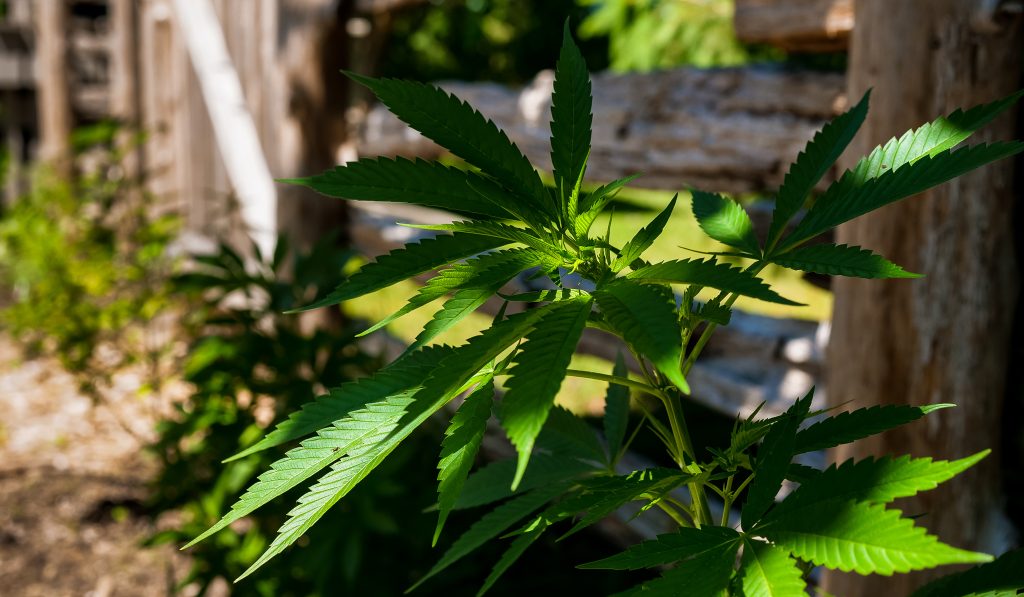
Sola dosis facit venenum; “All things are poison, and nothing is without poison; the dosage alone makes it so a thing is not a poison.” All medical practitioners, irrespective of their methodology or tradition, should carefully consider this phrase, attributed to the alchemist Paracelsus (1493 – 1541). In our era of one-size fits all medicine, Paracelsus’ insight into the difference between a medicinal and poisonous action of a substance being in the dose is not so widely understood. It is however quite germane to our discussion of cannabis, and rife with implications for understanding the nature of the substance. Paracelsus’ dictum leads us to the primary realization that the benefits or dangers of any substance – be it a food, herbal supplement, pharmaceutical drug, etc. – are entirely dependent upon the level and degree of an individual’s susceptibility to that substance. This phrase also asks us to question the range of effects that a particular substance can have, leading us to explore the nature and definition of a poison effect. Poisoning is not equivalent to a lethal dose, though it can lead there. Poisoning, we can say, is when an individual’s capacity for feeling and function has been disturbed.
Every Day Use
It is with chronic, daily cannabis use that we can often observe a very clear disturbance of an individual’s capacity for feeling and function, though the user may not always be able to perceive such an alteration. Many cannabis users have become convinced that their daily habit is what allows them to function, to be more creative, more emotionally balanced, more spiritual, less anxious, better able to relax and to sleep, etc. More often than not, those who make these emphatic claims have fallen under the spell of cannabis, and are no longer able to see beyond its alluring veil.1 As homeopath Colin Griffith explains: “what these users fail to see is that whatever effects their bodies manifest do not belong to them but to the drug. They are instruments on which the chemical drug is playing tunes. The effects are no more theirs than they would be if they took antibiotics for a tooth abscess.”2
In response to a patient’s inability to live her life without the use of cannabis, the natural medicine practitioner should ask: why is it that you are not able to function optimally in the first place? What are the underlying maintaining causes of your emotional imbalances and disturbances? Why do you have such difficulty relaxing and falling asleep? In such cases cannabis use may only be serving to suppress or cover over an underlying constitutional issue that needs to be properly addressed. And when we suppress a problem, rather than working to resolve or cure it, this may result in its temporary disappearance, but it certainly has not gone away. Suppression takes a surface manifestation of a disease and drives it to a deeper, more vital region of the organism, where it can create more chronic, intractable and debilitating illness.
An Ancient Medicine
Cannabis has a long history of use as a medicine. The Persian physician Avicenna (980 – 1037), who no doubt was familiar with cannabis strains much different than those that are available today, wrote of the use of cannabis for the alleviation of severe headache as well as treatment for degenerative bone and joint diseases, inflammation of the eyes, general edema, infectious wounds, gout, and uterine pain. However, he also pointed out that cannabis produces dryness that is “desiccating” (disrupting and deranging the vital fluids/fluid metabolism of the body). There are many clear signs that cannabis is warming, including increased appetite, red eyes, dry mouth and tongue, rapid heart rate and elevated blood pressure. As cannabis is excessively warming, it can result in a disturbance of the warmth activity of the organism, especially with regards to the metabolism. Chilly, sluggish and deficient digestive processes can often be observed in chronic cannabis users. The above mentioned symptoms are especially pronounced when it comes to the intensely psychoactive strains of cannabis that are grown today.
From the perspective of Traditional Chinese Medicine, it can be said that chronic use of cannabis can result in injuries to the Yin, damage to the Jing, and disturbance of the Shen. The primary constituent that causes such disturbances is THC. This is because, as herbalist Paul Bergner has remarked, “THC binds to the encocannabinoid receptors (CBD does not), and because it is many times more powerful than the endocannibinoids, the receptors drop in number and also become less responsive to maintain homeostasis.”3 Daily cannabis consumption often leads to gradually increasing dosage and frequency of use, clearly suggesting that tolerance and adaptation can develop quickly and easily.
Herbalist Todd Caldecott provides us with a useful explanation of cannabis from the perspective of the Ayurvedic tradition:
“Cannabis displays some of the properties of a poison, in that it spreads very quickly (vyavahi) and loosens (vikashi) the tissues. Through its subtle (sukhma) and penetrating (tikshna) qualities, it actually expands the space between all the cells of the body, opening up the channels (srotamasi). This is the reason for feeling high, and why it is consumed by sadhus and babas [who, unlike the average person, have been trained to focus their mind through contemplative practices]. It creates a subtle feeling experience that connects our experience to akasha (ether), the element of pervasiveness. So it opens and elevates consciousness, but not in an evolutionary way – just as a transient and limited experience of infinite space.”4
It is because cannabis serves to create space and allows for movement in the body that it can exhibit pain-relieving properties. It is for the same reason that cannabis can be utilized in some cancer treatment protocols (cancer is an uncontrolled proliferation of cells, when the tissue of our body can no longer maintain or identify its own boundaries. Hence, cancer is a disease that is very much related to ‘space’).
Recreational Use
While the chronic use of cannabis presents more pronounced dangers than occasional use does, infrequent or recreational consumption can still cause deep-seated disturbances on the level of body, mind and spirit – again, if that degree of individual susceptibility is there in a person. The use of cannabis “to relax”, for example, can easily become an addiction in the same way that others become addicted to drugs like diazepam to go to sleep at night or to “manage” (suppress) their anxiety symptoms. Such addiction is an often unconsciously motivated attempt to circumvent having to develop strategies and lifestyle changes that can lead to true understanding of the root causes of one’s issues. Without such an understanding, true resolution or cure is not possible.
The Physical Effects
Cannabis regularly results in a disturbance of the bladder, prostate, and sexual functioning in men. Cannabis can act as a potent aphrodisiac in the short term, but will usually lead to a lessening of erotic desire and even to impotence in some. Habitual use of cannabis results in a lowered white blood cell count, suggesting its negative affects on immune function. The homeopathic materia medica and provings of cannabis reveal that the adverse immune response that cannabis precipitates increases an individual’s susceptibility to bacterial respiratory infections as well as non-specific urethral infections, gonorrhoea, and chlamydia (homeopathic cannabis is an especially well known remedy in the treatment of gonorrhoea, and is indicated for genital discharges with burning pains and discomfort more generally).
The homeopathic materia medica of cannabis also reveals a strong affinity for disturbances of the thinking processes, with pronounced disorientation and a sense of disconnection accompanied by a free floating anxiety. The patient requiring homeopathic cannabis may often make mistakes in reading and writing and may generally have poor comprehension, tend to be forgetful and can become easily confused. While there can be difficulty concentrating, there can also be rapid thoughts and a pronounced tendency to theorize and draw far-fetched connections. Patients requiring homoeopathically potentized cannabis may report a sensation of the head being separated from the rest of the body (a symptom that says much about the state of being too much in one’s head, which cannabis in its crude form easily leads to. When this state progresses to severe pathology we can see, for example, paranoia and depersonalization. While cannabis users may give the appearance of being mellow and laid back, this appearance is often a symptom, as Colin Griffith notes, “of the distance that the cannabis has fostered between the smoker and reality”5). Other notable cannabis symptoms from the homeopathic literature include: sensations of being ungrounded, spaced out, unable to physically support oneself, of the limbs or the whole body feeling so light that it could float away; panic attacks, many fears including the fear of being alone in the dark, of entities, and of insanity. Rajan Sankaran notes that cannabis patients tend to exhibit oversensitivity and the need to “cover up for a feeling of inadequacy…The perceived weakness is actually an inadequacy in facing the threats, dangers and risks of the outside world. The Cannabis person feels unequipped to face them directly and hence observes the world from within the safe confines of a “glass cage.””6
Many of the above mentioned symptoms of chronic cannabis use are further understood when we consider the effects that cannabis has on our neurology. With prolonged use, cannabis disrupts the balance between the thalamus and hypothalamus and the pineal and pituitary glands. The anterior pituitary gland is responsible for the secretion of thyroid stimulating hormone, adrenocorticotrophic hormone, growth hormone, follicle stimulating hormone, luteinising hormone, and prolactin. We have a growing body of evidence suggesting that cannabis use results in significantly lowered levels of thyroid stimulating hormone. The hormones released by the thalamus and hypothalamus serve to regulate our flight and fight response, our appetite, thirst, and eliminatory processes. Negative modifications to these bodily functions are typically present after long-term use – at which point cannabis addiction tends to have already set in.
Ongoing pharmacological research on THC strongly suggests that it has marked affects on neuronal signaling and development, and researchers are beginning to explore how THC exposures during pregnancy could lead to adverse long-term changes in the neuronal development of babies and infants.7 Other research has drawn links between mother’s who smoke cannabis during pregnancy and an increase in the risk of their children developing leukemia and a variety of other serious birth defects. There have been further studies suggesting an increased risk of cancer of the esophagus and stomach with chronic cannabis use.
In Conclusion…
Cannabis is a complex herb, and one that should be carefully understood by those who use it. While public perception presents us with a marketable (and hugely profitable) image of cannabis, the reality of cannabis is more nuanced, multifaceted and complex than we are led to believe.
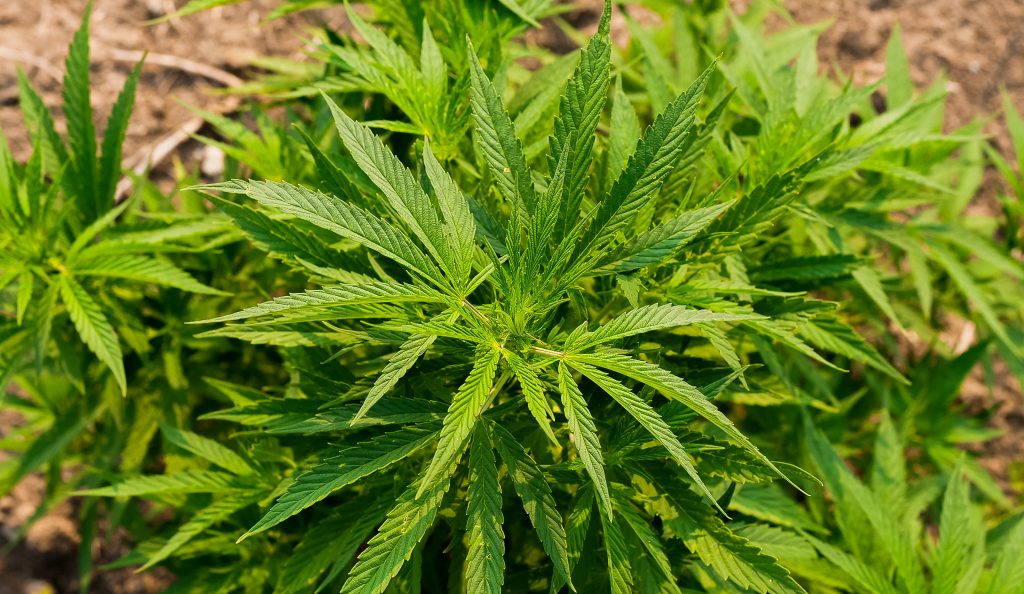
Footnotes:
1 From the perspective of the doctrine of signatures, the usually 5-leaved cannabis plant closely resembles a hand. This hand, it can be said, reaches for and makes an effort to grab hold of the cannabis user, who is rendered incapable of extricating herself from cannabis’ intoxicating embrace.
2 Colin Griffith, ‘The Companion to Homeopathy’ pg. 169.
3 Paul Bergner, unpublished writing.
4 Todd Caldecott, unpublished writing.
5 Griffith, ibid, pg. 168.
6 Rajan Sankaran, ‘The Soul of Remedies’, pg. 39.
7 See, for example, Kimberly S. Grant et al. ‘Cannabis Use during Pregnancy: Pharmacokinetics and Effects on Child Development.’
Photos provided by Serena Mor
Herbal Actions: Alteratives
Herbal Actions
What is a “herbal action”?
When we speak about the action(s) of a certain plant, we are referring to one or more effects a plant can have on our body. Often these actions are explained in two or three words; however, herbal actions are so much more than that! Since plants are wonderful complex beings, they also have several actions. Most herbs can compliment their action(s) in combination with another herb, basically showing off their best side with the support of a “good friend”. Sometimes they work great on their own, but most of the times, they excel with a good buddy on their side. Think- Teamwork!
Alteratives
In this blog post, I would like to have a closer look at the ‘alterative’ action of herbs. After studying my resource books and putting together what I have gathered from my mentors, it turned out to be quite difficult in nailing it down to one definition. What can be found in the next few lines, is a summary of my own attempt to define alteratives. While some herbalists may agree with the words below, others may crunch and frown upon this review. As with all studies, especially herbal studies, learn your craft from many different teachers and find what works best for you.
When I think of alteratives, I immediately think of a tonic action. Tonifying herbs usually slowly, but gradually, alter and support the bodies natural actions and functions. Unlike carminatives for instance, which may help you feel better promptly after a heavy meal has left you feeling full and with an aching stomach, tonic herbs like alteratives take more time to show effects. These effects however, keep one in for the long run and can show beneficial changes in several organs and organ systems. Herbalists once referred to alteratives as ‘blood purifiers’. Nowadays however, most herbalists no longer use this term, as only pure blood can keep one alive and if blood would be poisoned or ‘impure’, our bodies would die.
How Alteratives Work
Alteratives gradually restore proper function of the body, which automatically increases overall health and vitality. By helping to disperse toxic buildup in the interstitial fluid, alteratives aid the body to properly remove toxins and therefore, improve the metabolism, supporting proper absorption and delivery of nutrients and insure healthy elimination. As alteratives are masters of proper elimination, they mainly work on the kidneys, liver, lungs, the lymphatic system and skin.
Many alterative herbs are rich in minerals, vitamins and other trace elements and highly nourishing substances. Furthermore, most alteratives are alkalizing to the blood and help neutralize excess acid in the system. Some work by stimulating digestive function and some are immunomodulators. As stimulants, they mildly stimulate and activate the vital organic functions of the liver and gall bladder.
Personally, I have successfully used alteratives for a variety of instances. I am most excited to share how I was able to effectively clear stubborn eczema on my hands. By its special affinity in supporting organs of elimination, alteratives can help to restore sluggish liver functions. As the master detoxifier, the liver has a wide variety of functions and tasks. If these lack, so does proper elimination, and other organs have to take over the job of a comprised liver. Usually, the lungs, skin, kidneys, liver, colon and lymph share the many tasks of elimination. If one organ works at half capacity, another organ has to pick up the slack. In many cases, it can fall onto the skin, which then may break out with rashes or other skin eruptions. Alteratives are best supported with a holistic treatment protocol, which your herbalist can help you design. This could include dietary, physical, emotional and other lifestyle changes.
It is important to note that initially after starting treatment, skin eruptions can worsen. This is because the skin has already been trying to push these ‘stuck wastes’ out, and with the help of alteratives, now get’s a ‘push’ to finish this task. Therefore, before improvement is seen, initial worsening may happen, usually lasting for only a short period of time.
When to Use Alteratives
When in doubt, use alteratives. As most alteratatives are very gentle and work over a longer period of time, they should be the first group of herbs to consider when working with chronic inflammatory and degenerative diseases. These include skin issues, digestion issues, heat and dryness, cysts, arthritis and autoimmune conditions.
Energetics
As for energetics, many alteratives are bitters. Generally, most bitter plants are drying. In traditional Chinese medicine toxins of the blood and toxin-producing infections are considered ‘excess heat’. Since the Liver is associated with heat, too much heat can create extreme imbalance. Many alteratives are cooling liver herbs.
What are Energetics?
In herbalism we often refer to the “energetics” of plants. This can be a very helpful tool, as we get to not only consider the medicinal action of a plant and a certain condition we are trying to treat, but much more than that, we actually learn to work with the entire ecosystem of both plants and humans/animals. The basic energetics I will be referring to are cold/warm/damp/dry. As an example, if your underlying body condition is usually cold and dry, counter this with warm and damp herbs. This being said, I am not speaking of the actual, measurable temperature of a plant or fruit, but the effect this herb has on the body. As an example, think of biting into a piece of ginger or a cayenne pepper. Hot or cold? How about nibbling on chickweed or biting into a watermelon? Hot or cold?
If this interests you, Matthew Wood’s Book “The Practice of Traditional Western Herbalism” is awesome, or try Jim McDonald’s “Actions and Energetics in Western Herbalism” (available online).
Examples of Some Alterative Herbs
- Arctium lappa (Burdock root) is both preventive and medicinal as it supports the detoxification process. Burdock root assists liver supporting toxin elimination through the skin and bowels. As a bitter, Burdock stimulates the secretion of digestive juices, especially bile. Therefore, it helps with digestion and appetite. Burdock is cooling, as it cools the ‘heat’ of rashes. It is extensively used for the treatment of skin conditions that result in dry and scaly patches. Most effective for psoriasis if used over long period of time. Also great for teenagers with problem skin.
- Taraxacum officinale (Dandelion root and leaf) is similar to Burdock root. Dandelion is useful in signs of a hot inflamed liver with stagnation. It improves liver function and aids the natural detoxification process while protecting liver cells from oxidation and damage. The leaves have clear affinity for the gallbladder and, as such, aid in the digestion of fats. Ideal for those with “sour stomachs”. Great as digestive bitter, cooling to the liver. For chronic inflammation of the liver, it aids proper metabolism, supports detoxification and elimination. It also brings relief in gout and rheumatism as well as glandular swelling.
- Berberis aquifolium, Mahonia spp. (Oregon Grape Root) As a mild alterative, Mahonia is great for use with children as well as the elderly. It has a strong affinity for the liver and supports detoxification and elimination. As a bitter, moistening root that supports secretion of bile from the liver, it shows efficiency in bowel movements. In his book, The Practice of Traditional Western Herbalism, Matthew wood writes that, ‘The typical Mahonia patient is thin, dry, and constipated, with rough, scaly, dry skin.’
- Urtica dioica (Nettles) are considered a ‘blood building herb’ (eczema, headaches) as it tonifies organs and boosts the actions of many organ systems with a special affinity for the urinary tract/kidneys. Nettle is used as a spring tonic and general detoxifying remedy, being an excellent source of nutrition for the weak and feeble, recovering from illness or nursing mothers. Nettles are one of the most nourishing tonic herbs and foods we have in Western herbal medicine. Often times, Nettles are used specifically for childhood eczema and beneficial for all varieties of this condition, especially nervous eczema. Nettles can be helpful as a component of treatment for eczema in adults.
- Trifolium pratense (Red clover) Red clover is said to ‘thin the blood’ and has purification properties often benefitting those suffering with eczema, acne and other skin conditions. It is an important remedy for many childhood ailments and may be used safely for any case of eczema. Red clover is considered in cases of edema and hardened, sore lymph nodes, softening stubborn, hard, encysted lymph nodes. For clearing up cysts in the body, as any alterative, red clover needs to be used over a longer period of time. It has a special affinity to glands around the neck, under the ear and towards the back of the neck, as it tends towards single swollen glands. Check out the doctrine of signatures; The flower head resembles a lymph node. Further, Red clover acts on the liver, protects and aids in detoxification.
I hope this post gave you a little insight on Astringents and how they can interact with our body. This topic is covered much more in depth in the herbal course, which is currently developed and coming soon by our group of wonderful herbalists.
Resources:
Besides my own words, this write up features information from the following resources:
- Jim McDonald – Foundational Herbcraft – www.herbcradft.org – collected writings from www.PlantHealkerMagazine.com.
- David Hoffmann – Medicinal Herbalism: The science and practice of herbal medicine. Healing Art Press, Rochester, Vermont 05767. 2003.
- Abrah Arneson – The Herbal Apprentice: Plant Medicine and the Human Being – Green Heart Press. 2014.
- Matthew Wood – The practice of Traditional Western Herbalism – Basic Doctrine, Energetics and Classification – North Atlantic Books, Berkley, California. 2004.
- Rosemary Gladstar – Herbal Recipes for Vibrant Health – Storey Publishing, 2001/2008
Learning Herbal Medicine: Wild Bergamot
Already longing for some summer-time herbs? Please enjoy this guest blog by Taylor Eveson discussing some of the medicinal uses and properties of Wild Bergamot!
Wild Bergamot
Scent: Aromatic and Pungent
Botanical name: Monarda fistulosa
Common names: Wild Bergamot, Sweet Leaf, Indian Perfume, Horsemint.
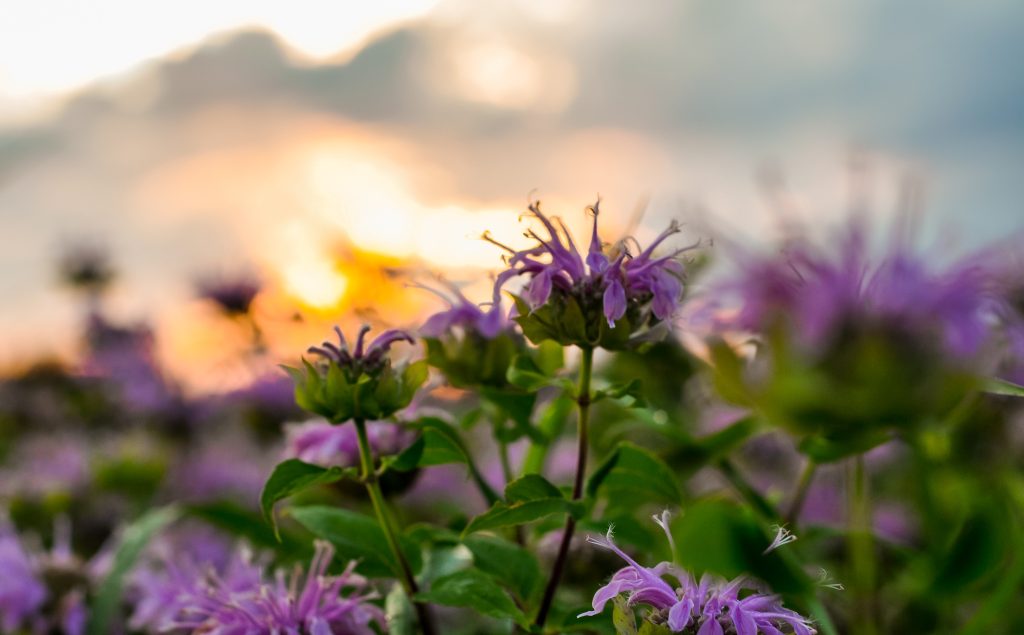
Identification
Wild bergamot is a perennial herb from the mint family. Like many other mints it has a square stem and opposite leaves. The leaves (5-8cm) are lanceolate with toothed margins and the bracts (the leaves just underneath the flowers) can be coloured with red or purple. Many stalks can sprout from the same root (known as a rhizome), so it is common to find several plants clustered together. It can grow to a height of almost a meter. From June to September it sprouts 20-50 flowers from the receptacle at the terminal end of the stalk. The tubular, irregular flowers can be varying shades of purple, lilac, pink or rarely white. The fruit is a nutlet, tightly clustered with many other nutlets. When the fruits ripen, they change colour from green to brown or black.
Habitat
It grows in rich, limey soils in dry fields, thickets and clearings. It prefers open fields and meadows that have not been cultivated for some time. It is distributed from Quebec to the Northwest Territories and British Columbia, and as far South as Georgia, Texas, Idaho and Northeast Washington. Some varieties are geographically widespread, but others are quite restricted to their range. Personally, I have been able to grow more than one variety of wild bergamot in a garden bed on a roof in Toronto; it did quite well as long as I watered it regularly.
Traditional Uses
Wild bergamot has many uses in traditional Native American culture. Due to its widespread distribution, many tribes utilized this plant including the Blackfoot, Cherokee, Chippewa, Cree, Iroquois, Ojibwa and Sioux nations. A Cherokee native, Tis Mal Crow, describes it as the medicine that draws out the fire, being particularly suited for burns and heat from fevers or infection. The Blackfoot applied a poultice of the flowers to burns or a burst boil, and after the wound was healed. Chippewa natives applied a poultice of crushed leaves to the head for headaches, and other tribes stuffed crushed leaves into the nostrils for the same purpose. Cherokee natives inhaled the steam from a hot infusion and also drank the tea for ‘sweating off’ flus and fevers.
In native American culture the concept of animal medicine archetypes is an interesting area of study. The indigenous people studied animals to learn about themselves and the medicines in their area. There were qualities about certain plants that merited an association to a particular animal; whether it was a favourite food of a particular animal, or some part of the plant bore physical resemblance to that animal, they recognized that the way animals related to plants contributed to why the animal was the way it was. So if they desired to attain to the nature of the bear or the deer, they would use the foods or medicines associated with that animal to achieve this end.
Wild bergamot is described as having a deer medicine animal signature. American herbalist Matthew Wood describes the plant as having long, slender stalks like a deer’s legs, supporting flowering heads that resemble a head with horns, or a rack of antlers. You can find the plant growing where deer like to graze near the edge of a forest, where they can quickly find cover if they sense danger. Male elks will roll in a patch of bergamot to attract a mate. The name “Indian Perfume” comes from its pleasant fragrance and its use as an aphrodisiac or in love potions. The deer archetype is associated with virility, love, passion and ‘the hunt’. The indigenous peoples believe the same vital energy is involved in hunting for a mate, or for prey; deer medicines fortify the body’s ability to perform in this regard. These medicines have a particular affinity for supporting the kidneys and the nervous system, both of which are intimately connected to the acuity of the sensory perceptions and are involved in the ‘fight or flight’ adrenal response to external stress.
Uses and Application
During a viral infection, the body initiates a variety of immune responses. Most notably, the core temperature is increased to a point that is uninhabitable for the virus. An individual will have the urge to curl up in bed to build their temperature. This internal increase in temperature is followed by a release of the heat through the exterior of the body by conductive heat transfer and sweating. The process of relaxation of the periphery of the body and attendant sweating is called diaphoresis. Warming, aromatic medicinal herbs like wild bergamot are known as diaphoretics. They stimulate the increase of the core temperature and allow blood vessels and surrounding tissues to relax so that the heat and the byproducts of cellular breakdown produced in the fight against the infection can be eliminated more easily through the skin and the digestive and urinary tracts.
The oil produced by wild bergamot is high in a volatile oil called thymol. Thymol is a powerful antiseptic for both internal and external use. It is also employed as a deodorant and local anesthetic. It is extensively used to medicate gauze and wool for surgical dressings. It is also utilized for commercial mouthwash production. Many different activities of thymol such as antioxidant, anti-inflammatory, and especially antibacterial and anti-fungal properties have been shown.
Indications: Fevers, headaches, lack of perspiration, respiratory infections, coughs, sore throat, colds and flus, cool and damp skin with internal heat, skin rashes, dermatitis, bug bites and stings, burns, depression, anxiety, insomnia, nervous hyperactivity, colic, flatulence, indigestion, poor appetite, diarrhea, constipation, menstrual cramps, candidiasis, urinary tract infections.
Herbal Actions: aromatic, diaphoretic, diuretic, antibacterial, anti-fungal, expectorant, carminative, nervous system restorative.
Energetics: Pungent, warming, aromatic, salty, savoury, draws out heat.
Dosage Examples
Infusion: 1 gram of dried herb per 5mL of water; 3-4 cups of tea a day or as a gargle, wash or steam inhalation.
Tincture: Fresh 1:2, dried 1:5; 5 mL or one teaspoon, 3-5 times daily.
Topical: Chewed or crushed leaves (from flowering plant) should not be left on the affected area for more than 5 minutes; its effect can become too hot and irritating. Steep a large handful into boiling water for 30-35 minutes and add infusion to bath water for sore muscles and nervous system conditions.
Photo provided by Serena Mor

